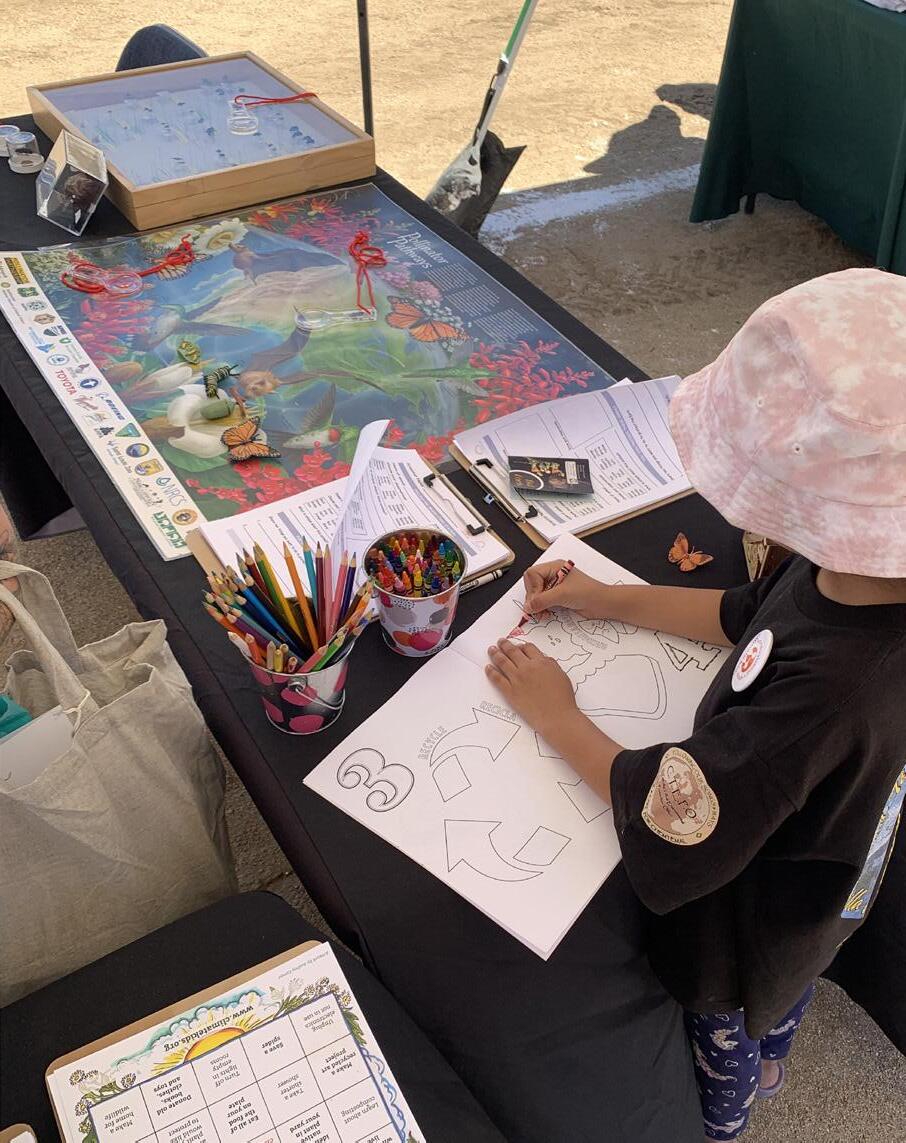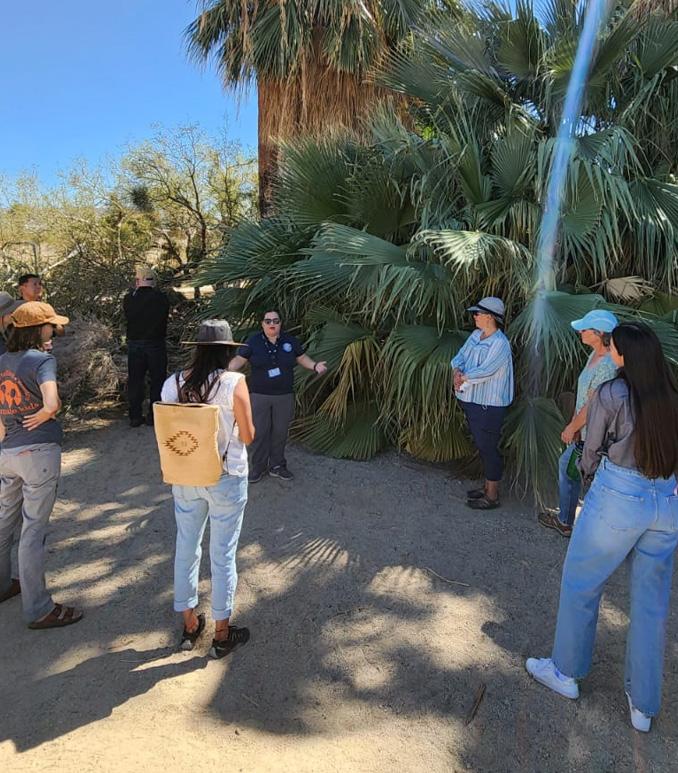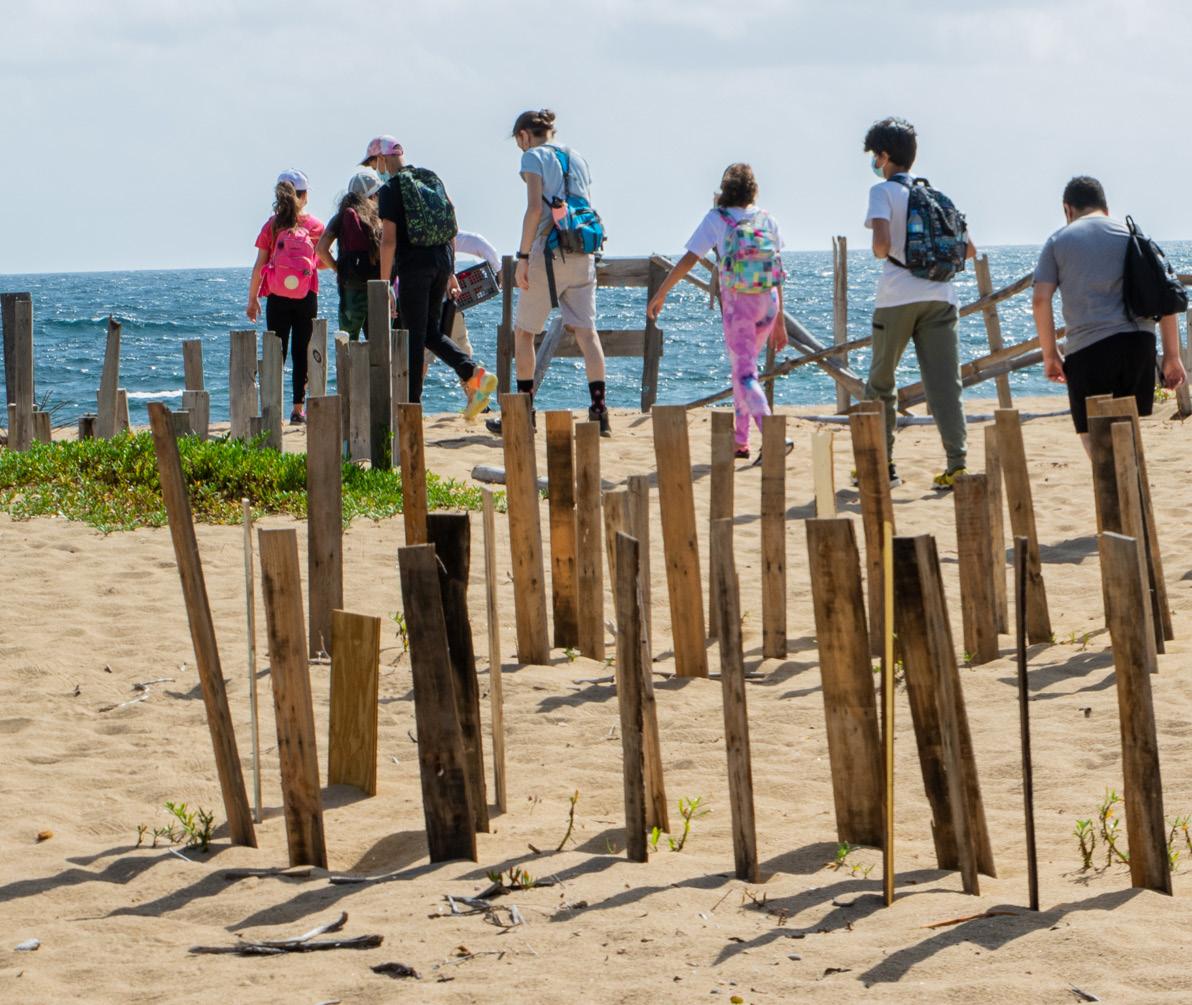CLIMATE SCIENCE ALLIANCE

A Model for Community-Led Climate Adaptation









REFLECTING ON YEARS 2015 - 2023












REFLECTING ON YEARS 2015 - 2023

Amber D. Pairis1, Paula Ezcurra1, Diane Terry1, Althea Walker1, Alexandria Warneke, Laura Engeman2 , Megan Jennings3
1 Climate Science Alliance, San Diego, CA, United States
2 California Sea Grant, University of California at San Diego, San Diego, CA, United States
3 Institute for Ecological Management and Monitoring, San Diego State University, San Diego, CA, United States

Suggested citation
Pairis, A. D., Ezcurra, P., Terry, D., Walker, A., Warneke, A., Engeman, L., & Jennings, M. (2023). Climate Science Alliance: A Model for Community-Led Climate Adaptation. Climate Science Alliance.
The authors acknowledge the Indigenous peoples on whose traditional territory we work and live. We honor the continued presence and resilience of Indigenous communities and nations today, and thank those we work with for your friendship and your good will in our efforts to collaborate. We also give thanks to the many partners who take the time to contribute to the Alliance network, and without whom the work could not continue.
Graphic design and layout by Diane Terry, Climate Science Alliance. Printed by Tribal Print Source, a Tribal-owned business: www.tribalprintsource.com
Cover design features eleven photographs. Please refer to the diagram for corresponding photo captions and credits:
(1) Tribal Working Group members attend a field trip following the monthly meeting, hosted by the Twenty-Nine Palms Band of Mission Indians
(2) Participants of a Wildland Fire and Fuels Management training at Cuyamaca Rancho State Park
(3) Immersive education workshop attendees visit one of the dune restoration sites in Puerto Rico, hosted by partners of the DUNAS project
(4) Alliance partners convene at the La Jolla Indian Campground for a Tribal Working Group and Stewardship Pathways meeting
(5) Oak seedlings growing in a greenhouse as part of the Resilient Restoration research project
(6) Stewardship Pathways plant propagation cohort participates in restoration activities with the Pauma Band of Luiseño Indians
(7) Youth participate in a Climate Kids Mexico event focused on climate science and atmospheric chemistry
(8) The art series "Faces of Change", by Affiliated Artist Audrey Carver, on display at a local library
(9) Participants of the Youth Climate Challenge, part of the 2019 Southwestern Tribal Climate Change Summit, gather for a group photo
(10) Members of the Climate Science Alliance network convene at Mission Trails Regional Park for the 2017 All-Alliance Business Meeting
(11) Youth attendee of the 2022 Cahuilla Earth Day event draws in a Climate Kids coloring book
(Back cover) Center photo features the Alliance team and partners at the 2017 All-Alliance Networking meeting


As someone who has been working on climate change adaptation for over 15 years, it can be hard not to lose hope. Yet, every day I know that good work is happening in our communities, on the land and water, and that people are coming together in unprecedented ways to build resilience and advance pathways towards a more equitable and climate adapted future. At the heart of our work at the Climate Science Alliance is a commitment to sustained and meaningful engagement. In fact, it's our superpower, and the cornerstone of the organization's founding principles and values. From the very first day, our team has focused on cultivating authentic collaborations where all people are valued for the knowledge they choose to share. A space that upholds a commitment to working together on behalf of all people and our non-human relatives.
For over seven years now, the Climate Science Alliance has embodied a community focused approach that upholds an equal valuation of different ways of knowing in order to advance a holistic and decolonized approach to adaptation planning and implementation actions for stewardship of natural and cultural resources and the human communities they are intertwined with. By centering trust, respect, and reciprocity in our work, we are advancing a model for a community-led process for implementing transformational adaptation. We hope this model can be an example that you can adjust and adapt to fit the needs of the communities you serve. The Climate Science Alliance Model demonstrates that organizations are capable of being the vehicles for adaptation when they work collaboratively to address foundational vulnerabilities and engage in a reciprocal process of cooperation, collaboration, and care with community partners.
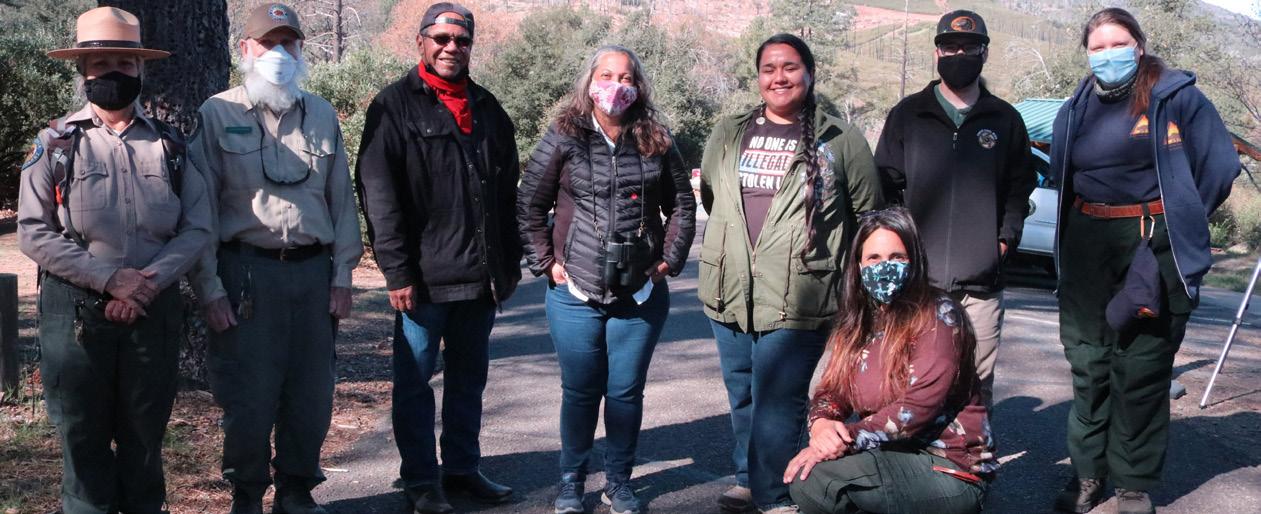
As we look to the future, I hope our organization will continue to serve as a bridge that upholds the equal valuation of knowledge and respectful engagement, providing a space where partners can participate in a reciprocal process—where sharing space means sharing power. On behalf of myself, and the larger Climate Science Alliance team, we are eternally indebted to the countless partners we have worked with—many of whom have become close friends. Together, we are making impactful steps to steward and protect the land, its people, and all living things now and for the next seven generations.
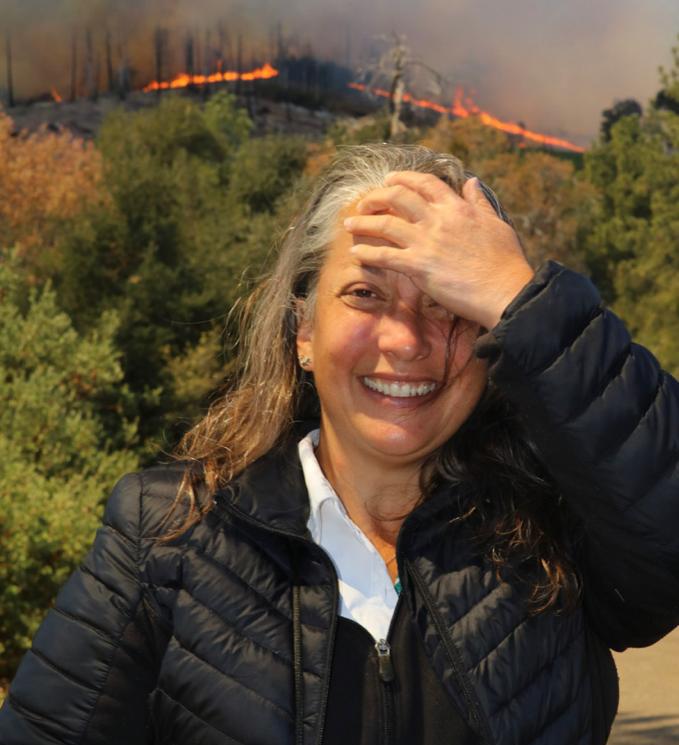
community,Amber Pairis, Founder and Lead Advisor Climate Science Alliance Photos of Pairis convening with Alliance partners for an observation of a controlled burn on Kumeyaay ancestral homelands, at Cuyamaca Rancho State Park. (Credit: Joelene Tamm)
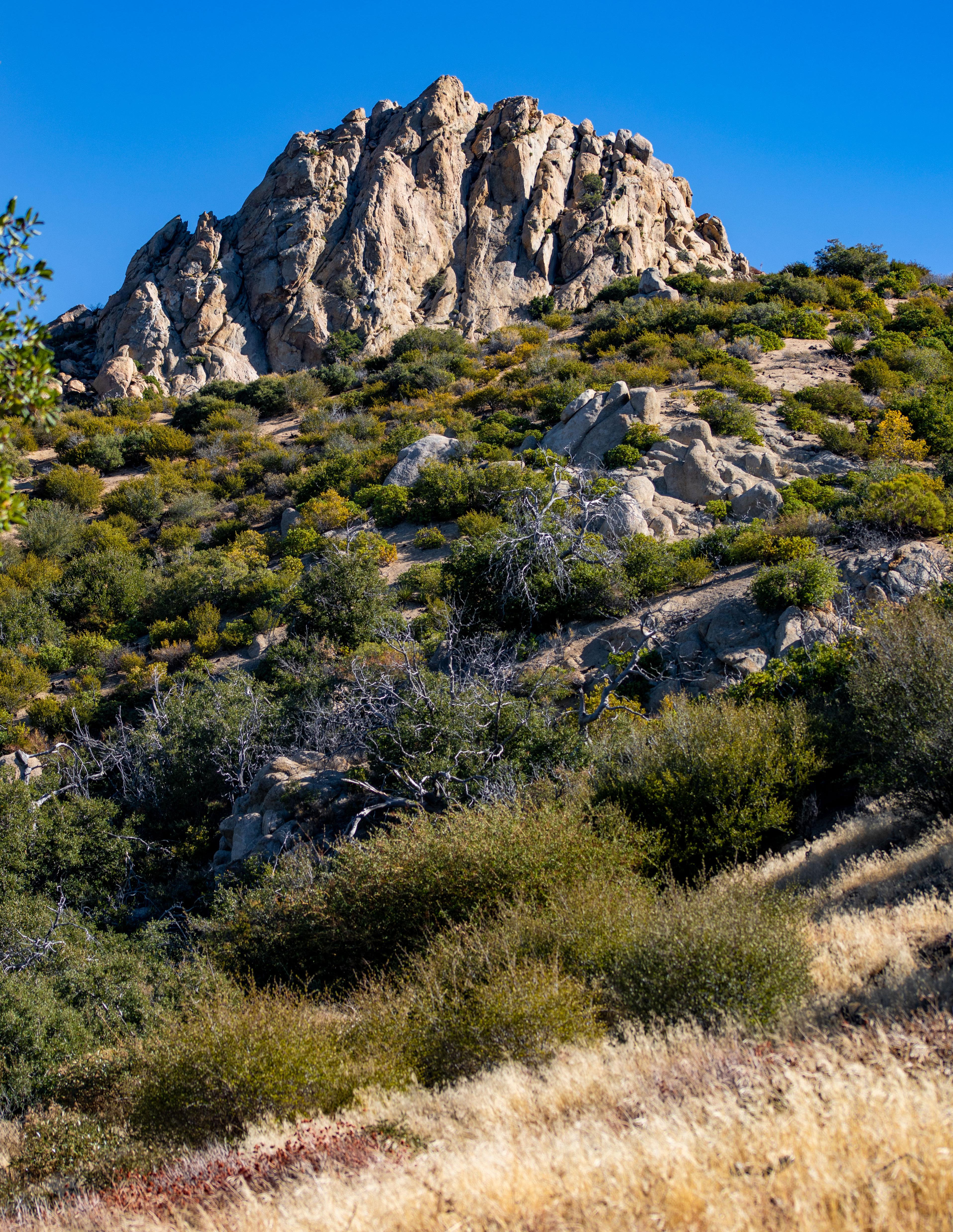 Photo by Condor Visual Media, taken on the homelands of the Los Coyotes Band of Cahuilla and Cupeño Indians.
Photo by Condor Visual Media, taken on the homelands of the Los Coyotes Band of Cahuilla and Cupeño Indians.

The Climate Science Alliance team would like to express our sincerest gratitude to our partners, more specifically our Tribal and Indigenous partners who share their culture and world perspectives that influence and inspire our work day in and day out. Thank you for your reciprocity, respect, and trust in this work we partner on to steward the land we all live and work on.
The Climate Science Alliance model and our work in community-led climate adaptation is directly influenced and inspired by our Tribal and Indigenous partners and their worldviews of relationships. We understand and honor that we cannot uplift and advance Indigenous management practices without uplifting and respecting Tribal and Indigenous worldviews. We reflect with great appreciation towards our Tribal and Indigenous partners for reminding us that not only must we find ways to connect and be in relation with one another, but also reminding us that as humans, we are all relational people who require these connections in our healing journeys. In establishing and nourishing our relationships with partners, reciprocity has always been at the center. The Climate Science Alliance team has worked tirelessly to uplift Tribal and Indigenous communities and their way of life, and in return our Tribal and Indigenous partners have uplifted our vision and journey resulting in transformational climate adaptation. The trajectory and success of the Climate Science Alliance wouldn’t be possible without our partners sharing their work and journey with us and we are sincerely grateful for the opportunity to work closely with the original stewards of the lands we all work and live on. We look forward to the meaningful work ahead of us, but most importantly the longstanding relationships that we will cultivate and cherish along the way.
Althea Walker, (Nez Perce, Hopi, Gila River) Co-Director & Community Resilience Lead Climate Science AllianceTeam members and partners of the Climate Science Alliance at the 2023 California Adaptation Forum.
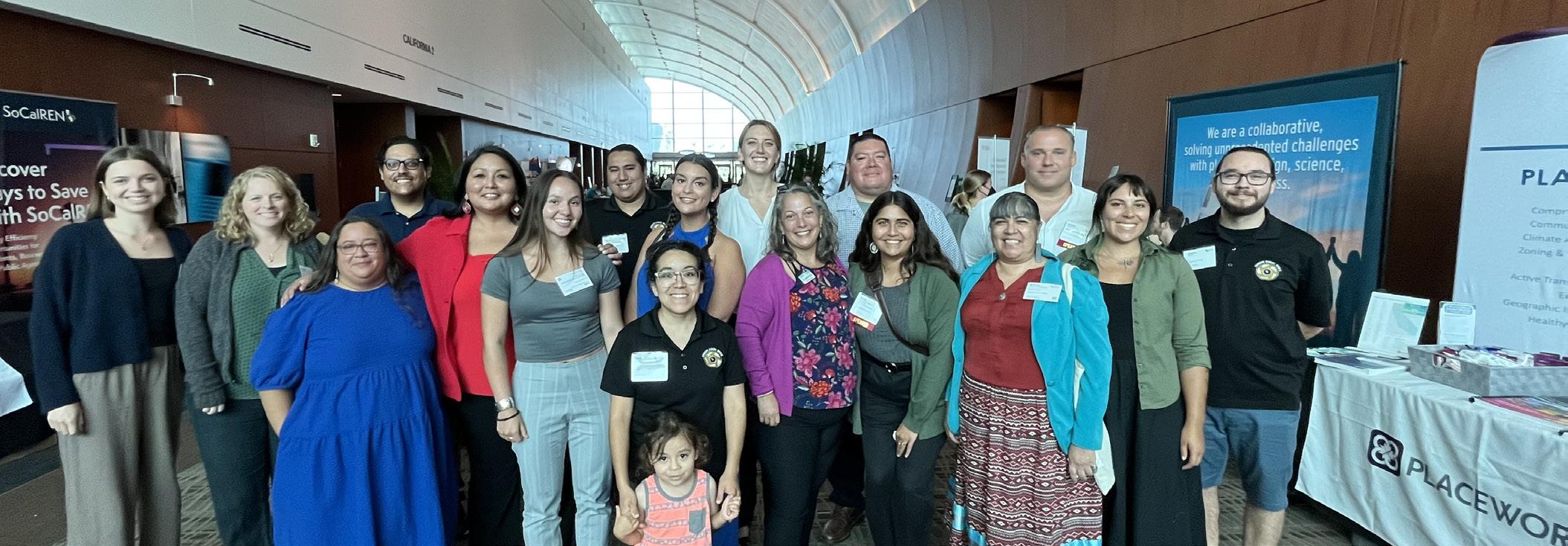
qe'ci'yew'yew (big thank you),
The Climate Science Alliance was created in 2015 with the mission to safeguard natural and human communities in the face of a changing climate. We do this through leading activities and creating partnerships that increase awareness of climate change impacts, promote solutions, and facilitate action. With a specific focus on natural and cultural resources, the Climate Science Alliance serves as a boundary-spanning organization, providing support for the development of usable information necessary for conservation and stewardship with information that is relevant at local and regional scales. As of 2022, the Climate Science Alliance includes more than 400 partner organizations, agencies, and community allies working to vision, lead, and implement projects together. For all projects, partners come together with a shared focus and a commitment to the equal valuation of different ways of knowing, including Indigenous, local, and academic science. As a boundaryspanning organization, the Climate Science Alliance provides a foundation for communities to advance transformational climate adaptation actions through a commitment to sustained and meaningful engagement, centering community voices and efforts to advance actions visioned, led, and implemented through collaboration.
In this text, we present our model as an actionable framework that advances the implementation of community-led transformational climate adaptation. In a relatively short amount of time, the Climate Science Alliance has repeatedly and successfully replicated and transferred its model across different geographies, cultures, and communities—demonstrating how enabled local communities can achieve transformational climate adaptation. This text articulates the foundational components of our model and explores key elements for transferability and replication that we hope will inspire others to prioritize relationships, reciprocity, and equal valuation for ways of knowing in their own work. Collaboration, cooperation, and sustained and meaningful engagement can and will keep us on a path to a more just and equitable future.
 Group photo of the 2017 All Alliance Networking
Group photo of the 2017 All Alliance Networking
The long-predicted direct negative impacts from climate change are irreversibly playing out at local, regional, and global scales (IPCC, 2021). As a result, wildfires, drought, extreme weather events, and prolonged periods of heat are threatening vulnerable human and natural communities. While the reduction of greenhouse gas emissions remains paramount to curb more severe global warming and associated impacts, climate adaptation planning and implementation are also necessary to support resilience in communities facing the now inevitable impacts of climate change.
Concurrently, climate and natural resource scientists are conducting research and experimenting with landscape transition scenarios to address projected climate impacts to natural resources and the human communities they are intertwined with. These research results are often disseminated through publications and academic conferences that do not always reach decision-makers or community members in an effective manner. In addition, research is seldom designed collaboratively with communities, making it difficult to integrate the results into existing climate or landscape-scale planning and management actions. This disconnect becomes wider if adaptation planning and action does not focus at a local scale, or take into account place-based socioeconomic, political, cultural, and ecosystem values and constructs that determine efficacy of implementation (Adger, Lorenzoni, et al., 2009).
It is well established that interdisciplinary, cross-sectoral approaches to planning are needed to advance climate adaptation. However, recent studies have highlighted that there is a disconnect between planning and implementation (Bierbaum & Stults, 2013; Dovers & Hezri, 2010; Shi & Moser, 2021). In particular, the accessibility of relevant science (Singh et al., 2020) and external expertise (Dannevig et al., 2012) have been identified as two key resources needed to advance climate adaptation
planning and implementation. To address this disconnect, collaborative development of regionally specific approaches, where partners can share critical scientific information, resources, and strategies to achieve on-theground results, can be a key strategy to meeting the challenges of a rapidly changing climate.
Transformational adaptation—which seeks to move beyond incremental adaptation by fundamentally transforming ecological and social systems (Fedele et al., 2019; Lonsdale et al., 2015)—takes into account these real-world constructs by utilizing an iterative process that focuses on addressing the foundational and dynamic causes of what makes communities vulnerable to climate impacts (Warner et al., 2019). When led by communities, a transformational adaptation approach requires the space to address institutionalized practices or conditions that are detrimental to, or limit, climate adaptation efforts, and design solutions to sustainably reduce the climate vulnerability of people and ecosystems (Fedele et al., 2019, 2020; Feola, 2015; O’Brien, 2012).
The Climate Science Alliance seeks to achieve transformational climate adaptation by serving as a boundary-spanning organization. Boundary-spanning organizations are important hubs of knowledge that enable co-production by facilitating connections among partners with a focus on science translation and communication for local leaders (Kirchhoff et al., 2013; Reed & Abernethy, 2018), but differ from other organizations in that they emphasize sustained collaboration and engagement among community-based scientists, stakeholders, leaders, and resource managers (Fudge & Hiruy, 2019). The Climate Science Alliance team’s commitment to sustained and meaningful engagement allows for the integration of different forms of knowledge such as local knowledge and traditional ecological knowledge (Gray, 2016).
Transformational adaptation requires co-production of knowledge across sectors and scales with a high level of community buy-in and trust that is essential to facilitate the "transformation" of the community and its response to climate change to address multiple challenges in a mutually beneficial way (Boon et al., 2021). To advance transformational adaptation practices at local and regional scales and achieve community and ecological resilience more broadly, it is crucial that the pathways for successful relationship building and boundary-spanning approaches to transformative climate adaptation are replicable and transferable.
In this text, we present our boundary-spanning model that advances the implementation of community-led transformational climate adaptation in Southern California. The Climate Science Alliance Model (Alliance Model) is completely integrated into the functioning elements of the organization itself with a strategic and intentional focus on a community-led transformational adaptation approach to all activities. The Climate Science Alliance has repeatedly and successfully replicated and transferred its model across different geographies, cultures, and communities—demonstrating how enabled local communities can achieve transformational climate adaptation.
Here we lay out the foundational components of the Alliance Model, illustrate the Alliance Model through a case study of the Alliance Model in action, explore the key elements for transferability and replication, and evaluate the success of this community-based approach over the last seven years. Our hope is that this work will provide a framework for best practices for others working in the space.

"In a surprisingly short period, the Climate Science Alliance has formed to provide a much needed network of climate/environmental science experts and related decision making actors in San Diego County, along with Counties to our north and the cross-border Baja Mexico region."
- DAN CAYAN & JULIE KALANSKY CALIFORNIA NEVADA ADAPTATION PROGRAM
Founded in 2015, the Climate Science Alliance was created with the mission to safeguard natural and human communities in the face of a changing climate. Since then, the Climate Science Alliance has served as a boundary-spanning organization, providing support for the development of usable information necessary to adapt to climate impacts that are relevant at local and regional scales.
Figure 1. The Climate Science Alliance achieves boundary-spanning projects by integrating three distinct components (Building Resilience, Building Capacity, and Building Community) that leverage community partners to advance transformational adaptation and inform climate solutions.
As of 2022, the Climate Science Alliance now includes more than 400 partner organizations, agencies, and community allies working to vision, lead, and implement projects together. For all projects, partners come together with a shared focus and a commitment to the equal valuation of different ways of knowing including Tribal, local, and academic knowledges.
The Alliance Model is built upon three distinct components: (1) Building Resilience, (2) Building Capacity, and (3) Building Community (Figure 1). Specifically, Building Resilience advances co-production of knowledge across sectors and scales; Building Capacity creates opportunities for partners to cultivate capacity, build motivation, and exercise social capital; and Building Community
fosters sustained and meaningful engagement that creates a sense of community and builds trust.
When the Climate Science Alliance first launched, its boundary-spanning projects focused on one of these components at a time—building trust and knowledge among smaller and more aligned sectors and partners. Over time, as projects and programming expanded, the integration of these three components and the development of cross-cutting initiatives and efforts facilitated an evolution towards transformational adaptation (Figure 2).
With this integration came an acceleration in the number of boundary-spanning projects that support regionally specific cross-disciplinary research. Projects are visioned, led, and implemented by community partners
and demonstrate how to bridge the gap between climate research and community use through multiple innovative avenues of science translation. This consolidated approach helps to better inform climate solutions and meet people where they are with accessible information on climate science, integrated planning, and holistic management actions.
While most adaptation responses focus on short-term coping strategies and incremental actions, the Alliance Model takes a transformational adaptation approach by centering community-led activities that address the foundational challenges that make communities vulnerable to climate impacts. The Alliance Model focuses on more than just science translation and strategy development. Rather, it intentionally integrates culture and community into an iterative process. And while some organizations or researchers might aim to enable a community to understand and integrate the concepts of climate risk and solutions with a set of prescriptive strategies, the Alliance Model instead makes space for community partners to step in and lead the process, identifying the strategies that reflect their priorities, values, and knowledge of the community they intend to serve. To do this requires an enabling environment that “encourages freedom of thought and expression and stimulates inquiry and debate” (Twigg, 2007). In order to move beyond isolated and prescriptive efforts that are not tailored to the community they are intended to serve, community-led approaches provide a pathway towards transformational adaptation by facilitating change from within, an important component of advancing adaptation decision-making rather than attempting to force change from outside the community (Adger, Dessai, et al., 2009).
In this community-led approach, the Alliance focuses
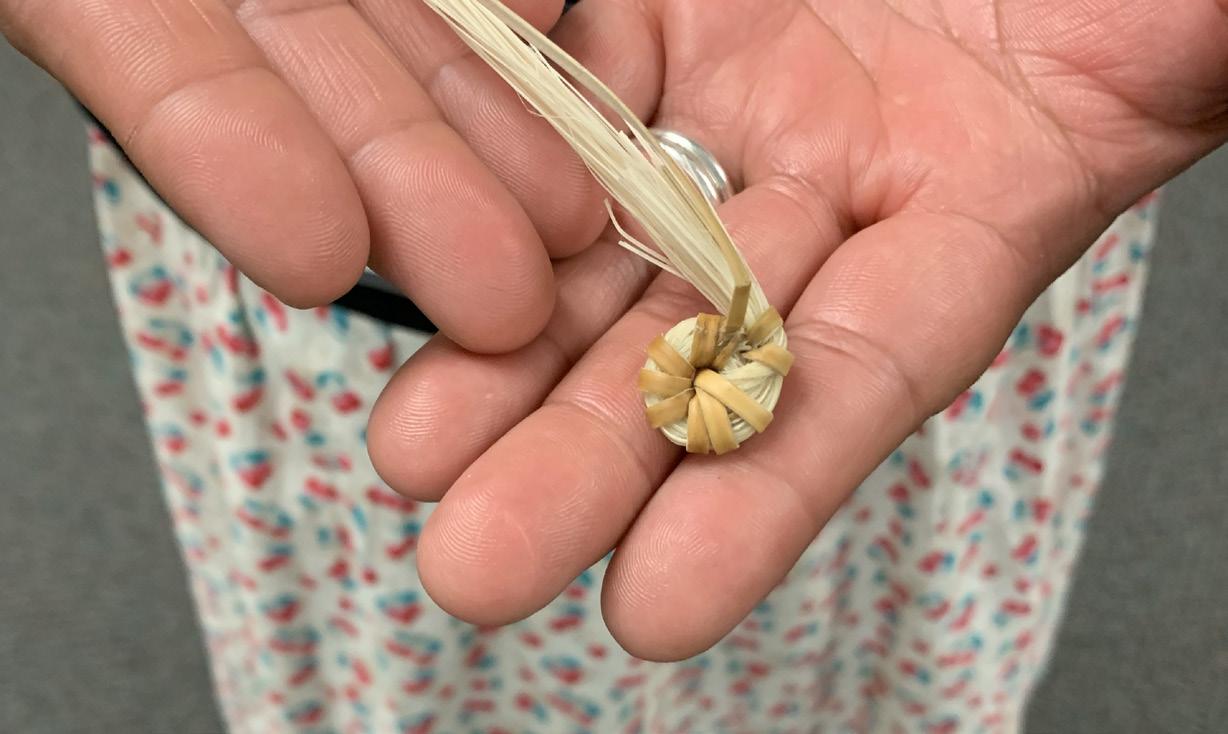
on providing organizational support to facilitate these conversations and inspire an equitable approach to all decision-making. All activities are informed and guided by listening to—and taking our lead from—community partners and creating long-term relationships built on principles of sustained and meaningful engagement. The Alliance Model provides the flexibility to pivot, to be adaptable in the work, and to adjust focal areas based on listening and creating space for partners to lead. In addition, this approach allows community champions who are willing to support, promote, and take leadership roles in initiatives and projects to elevate community voices and priorities, providing foundational support for the long-term stewardship of projects.
Sustained and meaningful engagement is more than just being a good partner; it requires at a minimum respect, reciprocity, and authentic relationships (Tsosie et al. 2022). It requires that we do our due diligence to understand the root causes of vulnerabilities as well as the historical, social, political, and economic constructs that play a role in successful adaptation planning and implementation. For example, in 2021 the Climate Science Alliance team worked with Indigenous partners from across the Southwest to begin compiling resources for non-tribal partners wanting to work with Tribes on climate change. The resulting resource, Building Authentic Collaborations with Tribal Communities: A Living Reference for Climate Practitioners, aims to accelerate opportunities for reciprocal relationships by providing resources for non-tribal partners to expand their understanding and move their work forward in a good way where all people are valued for who they are and the knowledge they hold.
Building Authentic Collaborations with Tribal Communities: A Living Reference for Climate Practitioners
www.climatesciencealliance.org/info/ meaningful-engagement
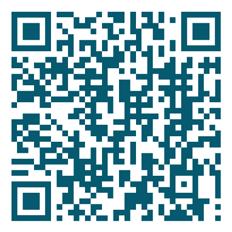
At its inception, the Climate Science Alliance was overseen by a single staff (founder) who assembled a 20 person Vision Team. The Vision Team was diverse in its composition, representing expertise and responsibilities for natural resource conservation and management, scientific research, human health, agriculture, water resources, military operations, and local government. They were chosen for their extensive background and reputations for being collaborative and constructive in their suggestions as well as their willingness to help build a vision for the region that would protect both natural resources and human communities.
The Vision Team was first convened in April 2015 to provide input and ideas to establish the foundation and direction for the Alliance and chart a course for the development of the organization in its first year. Collectively, the Vision Team was tasked with developing the Alliance’s strategic plan, governance structure, and decision-making policies through a collaborative process to ensure the mission and focus of the organization met the diverse needs of current and future Alliance partners. The Vision Team was intended to function for a limited duration, and in 2016 was replaced with a Working Group structure overseen by a permanent Advisory Team.
Initially, Working Groups were based on the three pillars of the Alliance: Science-Focused Partnerships, Climate-Smart Conservation, and Innovative Community Engagement. Each Working Group was expected to provide the necessary support to ensure the Alliance as a whole was successful in achieving the goals and objectives set out
Figure 3. The Climate Science Alliance originally achieved smaller, sector-specific goals through three distinct working groups but over time those core areas have been woven together and integrated into all boundary-spanning projects.
in the Alliance Strategic Plan. While the Working Groups had unique tasks to accomplish, there were overlapping goals that could only be accomplished through intergroup collaboration. With the original Working Group structure, the Alliance network was able to gain significant traction in the South Coast ecoregion of Southern California and Northwestern Mexico. However, in 2018 the Advisory Team identified a growing need to evolve the framework of the Alliance from three distinct Working Groups to what the community needed most—a united network linking powerful projects across all three pillars. With this integration, science, management, and community engagement strategies and solutions could more easily be integrated throughout the network. The core pillars of the Alliance were rebranded to Building Resilience (Science-Focused Partnerships), Building Capacity (Climate Smart Conservation), and Building Community (Innovative Community Engagement), and though the goals and objectives of the groups remained steadfast, large-scale projects were developed to span and integrate all three (Figure 3). This new boundary-spanning model allowed partners to more effectively share skills, expertise, and knowledge in order to bridge the gap between climate research and application within the community and formed unique assemblages of researchers, managers, artists, educators, and leaders from local, state, federal and Tribal governments, as well as cross-border collaborations with partners in Northwest Mexico.
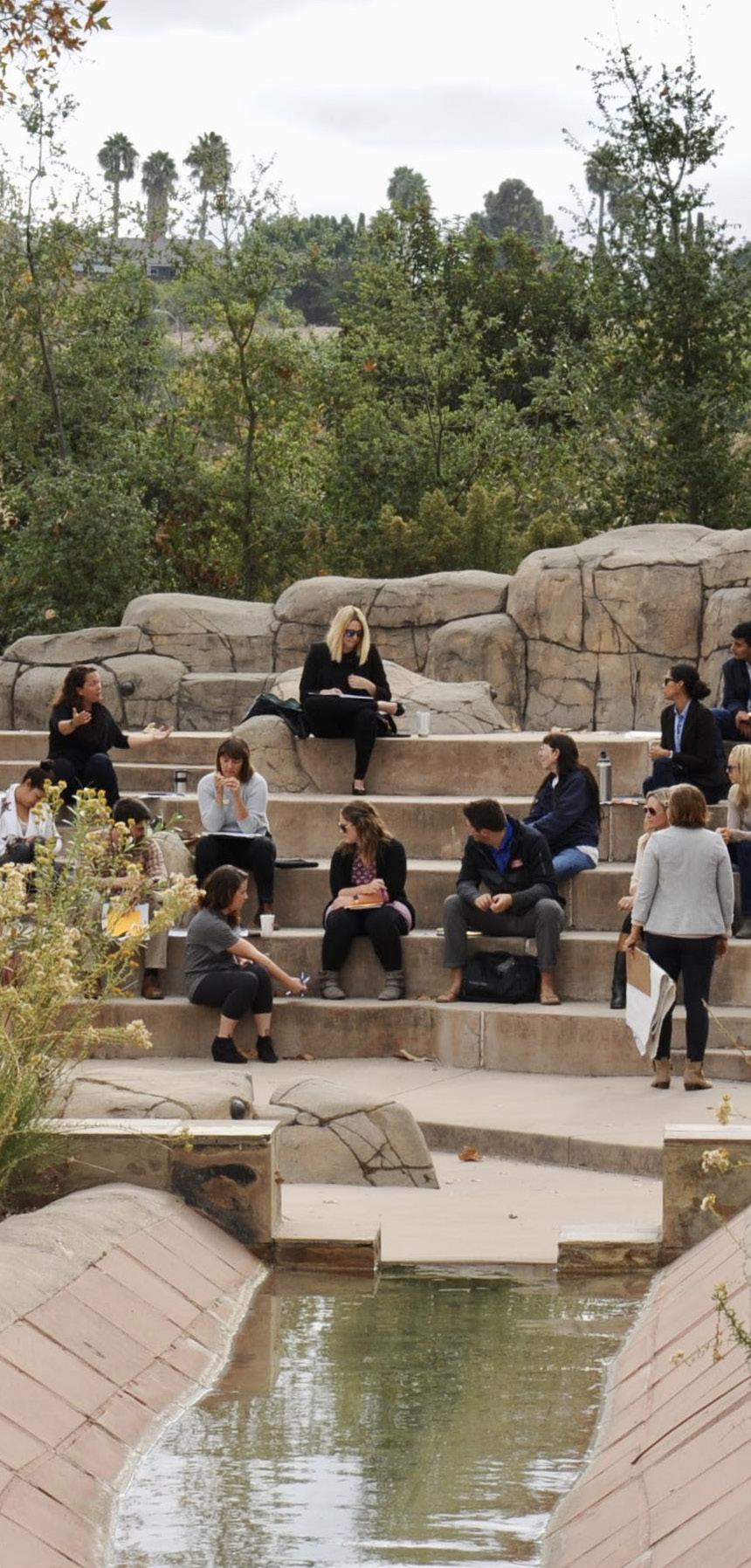
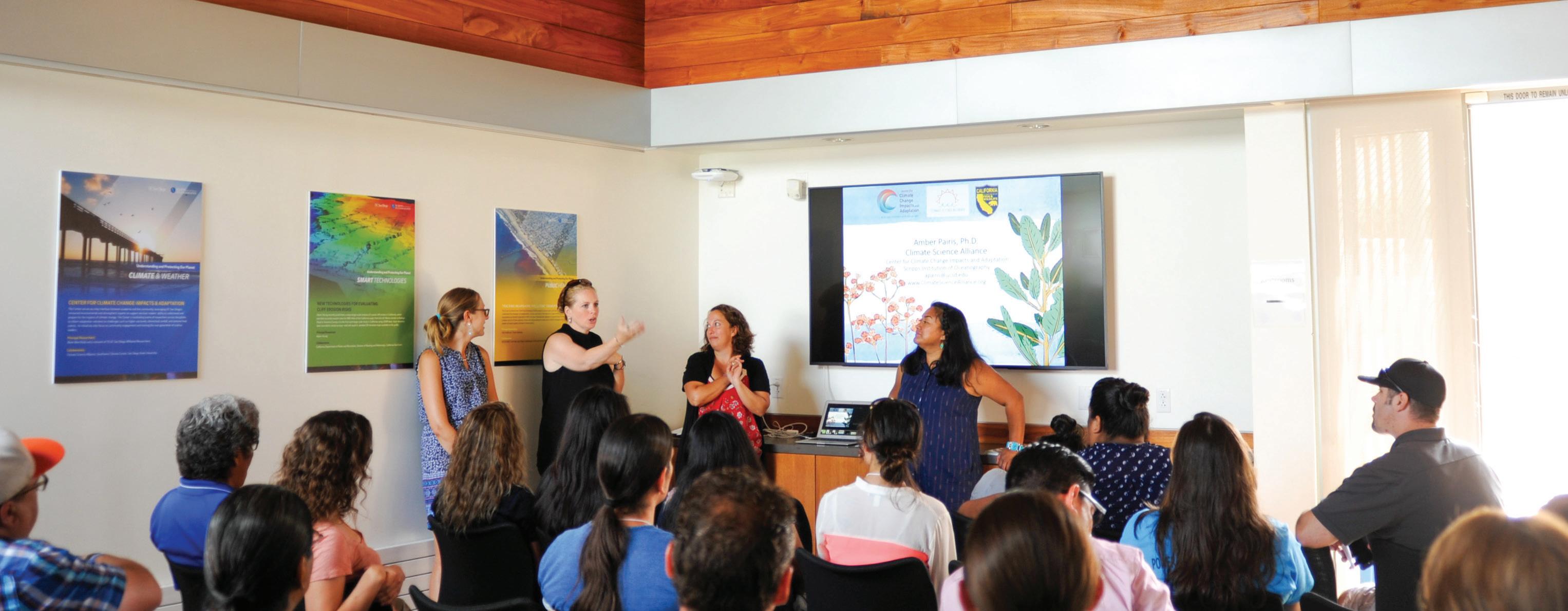
The Alliance Model is transferable across geographies, topics, sectors, and communities and is built on three key components that can be replicated and scaled for maximum impact: (1) Building Resilience through the co-creation and dissemination of actionable and relevant research; (2) Building Capacity through training, tools, and resources that support application of climate
science and solutions; and (3) Building Community through innovative community engagement. Together, these components advance cooperation, co-production, communication, and the implementation of adaptation solutions that are focused on addressing the root causes of vulnerability in human and natural systems (Figure 4).
Figure 4. The Alliance Model is built on three key components that can be replicated and scaled for maximum impact. Together, these components advance cooperation, co-production, communication, and the development and implementation of adaptation solutions.
The Building Resilience component of the Alliance Model focuses on facilitating and enhancing partnerships that connect, translate, and disseminate the best available regionally-specific climate science and impacts on natural ecosystems and human communities (Figure 5). Partner convenings provide a forum to share regionally specific science—including academic science, Tribal science, local knowledge, and Traditional Ecological Knowledge—through consistent engagement among scientists, planners, and policy- and decision-makers. These meetings, informed by Indigenous elders and knowledge holders with connections to the land and
waters since time immemorial, help to cultivate connections and partnerships that ensure researchers are aware of knowledge gaps and management needs. Through these convenings, research partners can receive direct input and guidance from community members on what kind of research and inquiry is needed which increases the applicability of results. This form of co-production allows researchers to work cooperatively and collaboratively with partners to understand and prioritize the needs of community members, many of whom have historically been excluded from research and planning activities.
The relationships created over time through these convenings support interdisciplinary research projects where co-production of priorities is directly tied to advancing planning and projects on the ground as identified by the people most closely tied to that place. Through this lens, partners prioritize informed decision-making and implementation of actions that safeguard both human and natural communities while continuing to advance scientific discourse and academic knowledge. The unique assemblage of knowledge holders, experts, and community representatives encourages a model of cooperative development of climate-oriented, regionally relevant research that directly links research to key management strategies and community inspired actions. This approach has resulted in multidimensional projects within the Climate Science Alliance network that support the planning and implementation of climate informed actions at the landscape scale, actively conserving natural resources, safeguarding local communities, preserving cultural heritage, supporting intertribal and binational collaboration (see Working Groups section, on the next page), and fostering science-focused partnerships across multiple geographies and disciplines.
Specifically, Climate Science Alliance partners work collaboratively to:
a) Identify and compile state-of-the-art knowledge around climate change impacts, vulnerability, mitigation, and adaptation for the Southwest region and beyond
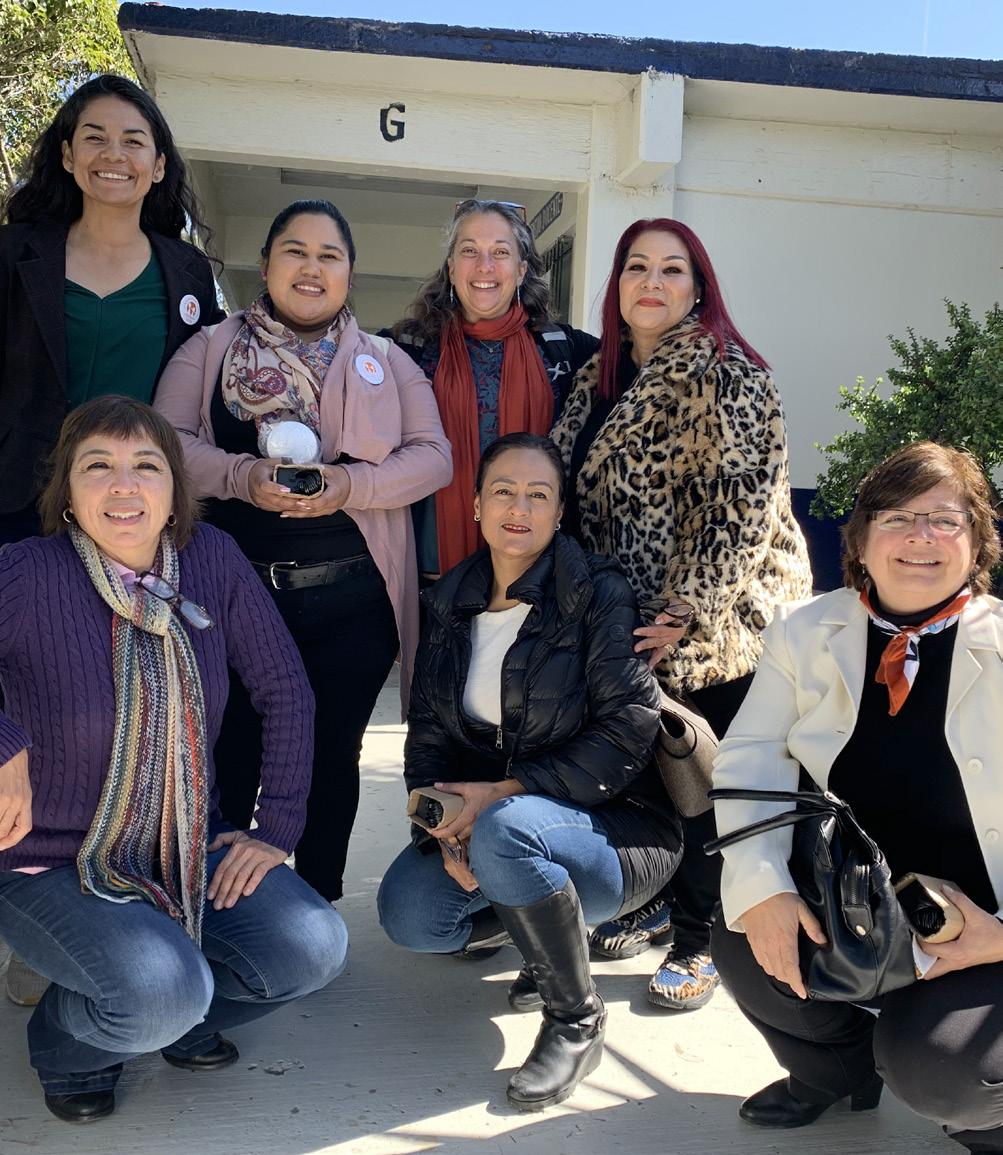
b) Cooperatively prioritize regional climate issues and identify approaches to addressing those issues
c) Develop unified climate science communication pieces for the region and provide guidance on how to develop and institutionalize this science and solutions into policies and projects
d) Create pathways for encouraging co-production of science and solutions that are relevant and regionally specific
e) Support planning, land acquisition, restoration, and management goals by directly linking key management strategies and activities to conservation action on the ground
f) Uphold the equal valuation of ways of knowing and a commitment to sustained and meaningful engagement with the communities we work with
One way Climate Science Alliance’s partnerships advance transformational adaptation is through community formed and directed working groups. These groups bring together a diverse set of partners to help facilitate regular conversations on how to cultivate meaningful and authentic collaborations and improve equity and inclusion in activities and within networks. Working groups provide leadership, guidance, and insight into community goals and priorities while setting the stage for co-production.
Diversity among working group members brings creativity and inventiveness into project ideas and implementation efforts and supports the equal valuation for ways of knowing by creating a space inclusive of all experiences, skills, and knowledges. The goal of working groups is to bring partners together to focus on relevant projects and share skills, expertise, and knowledge in order to bridge the gap between research and application within a community. The Climate Science Alliance Working Groups are led by partners from communities that have historically been excluded from conversations about community planning, natural resource conservation, and climate adaptation, including but not limited to Indigenous communities and cross-border collaboration with partners in Northwestern Mexico.
The Tribal Working Group relies on mutual education, environmental programs, and traditional knowledge to safeguard the lands and cultures of Southern California’s Indigenous communities from the threat of climate change. Working group members lead, advise, and guide all aspects of each project, collaborating with researchers and non-tribal partners to decolonize the conservation and climate adaptation paradigm and promote intertribal efforts that integrate cultural and natural resource conservation, equal valuation of ways of knowing, and adhere to data and knowledge sovereignty policies.
www.climatesciencealliance.org/tribal-working-group

The Binational Working Group convenes scientists, resource managers, representatives from conservation organizations, educators, philanthropists, and other partners on both sides of the United States-Mexico border to facilitate collaborative climate adaptation projects in terrestrial and aquatic ecosystems and human communities. Through binational, interdisciplinary collaboration, the Binational Working Group is advancing climate science and adaptation solutions throughout the Baja California Peninsula and surrounding region to address climate change.
www.climatesciencealliance.org/binational-working-group

"Climate change is one of the biggest environmental and community risks faced by Tribes, and it can be difficult for us to access the resources we need to prepare for it. The Climate Science Alliance has been instrumental in bringing education, assistance, and opportunity to the Pala Reservation, and has created a bridge to those opportunities for other Tribes as well."
- SHASTA GAUGHEN, PALA ENV. DEPT.
Decolonization is an important part of advancing climate change adaptation. The Climate Science Alliance recognizes this and prioritizes the integration of Indigenous voices into all aspects of our work. At the heart of all this is a commitment to sustained and meaningful engagement where relationships are maintained and nurtured regardless of whether there is a project or funding. Our work moves forward because we uphold the commitments we make to the people we work with and the planet we cherish.
The Climate Science Alliance team has always embraced diversity and for many years has centered its work around our relationships with those from historically excluded communities and in particular our relationships with Indigenous partners from across the Southwest. Our team approach is built around our commitment to deep collaborative learning and addressing the foundational vulnerabilities that many communities experience. As an organization, our team understands that none of this work matters if the power to act is not in the hands of the community. Our work serves as a bridge between academic and Indigenous science including local knowledge. We continually advocate for the equal valuation of knowledge, co-stewardship of all ancestral lands, and the importance of Indigenous peoples being at the forefront of the environmental justice movement. Our involvement with our partners exceeds the timelines of any one project and doesn't end when the funding runs out. Our work in southern California is guided by the priorities identified by the members of the Climate Science Alliance Tribal Working Group (TWG) and shifts over time based on community needs. The TWG is an intertribal collaborative of 20+ Tribal Nations and Indigenous organizations across southern California with ties across the southwest, including Kumeyaay, Payómkawichum/Luiseño, Cahuilla, Cupeño, Tongva, Acjachemen, and Chumash peoples.
As a team we are proud of how many of our projects provide co-benefits to, or directly address, equity in
the climate adaptation space. As each project and community has individual needs, there is no single way in which to approach climate adaptation, however we take our lead from our partners and are proud of the collaboration and cooperation that has led to good work. Below are some examples of the work we do that exemplifies this in our organization:
Tribal Climate Adaptation Planning and Projects: Tribal Climate Adaptation Plans developed in collaboration with our Tribal colleagues are living documents that provide a foundation for the Tribe to address climate change impacts to a variety of sectors.
www.climatesciencealliance.org/twg-projects
Indigenous Data Sovereignty: We work to ensure that data for and about our Indigenous partners are utilized to advance their community priorities and safeguard their lands and cultures from the threat of climate change.
www.climatesciencealliance.org/info/data
Intergenerational Knowledge Exchange: Our events and meetings are open to community members of all ages and we often have youth and elders participating together at our gatherings. Through our Climate Kids-Tribes program, we work directly with Tribal educators, knowledge holders, youth, and elders to elevate and incorporate the critical voice, perspective, and deep knowledge from Indigenous communities into projects and programs.
Indigenous Climate Fellowships: A unique opportunity to provide financial support for Tribal Elders and Indigenous knowledge holders to participate, advise, and support our team and partners to elevate and incorporate the critical voice, perspective, and deep knowledge from Indigenous communities into projects and programs.
The Building Capacity component of the Alliance Model focuses on providing training, summits, resources, tools, and mentoring to disseminate and translate information on climate science, planning, and management in a way that is accessible to multiple audiences (Figure 6). Initially, training and tools focused on advancing tenets of climate-smart conservation (Stein et al., 2014), a process for incorporating climate considerations into planning and projects. The training, tools, guidance, events, and resources that were created in the first few years of the Climate Science Alliance’s inception helped to advance the integration of climate-smart conservation objectives into regional and local policies, plans, and projects that
have served as the foundation for work that continues today. This included hosting the first Spanish-language Climate Smart Conservation Training in 2015 with partners from Baja California and Southern California. Every year, the Climate Science Alliance continues to lead or support various training events, conferences, summits, and working groups that provide opportunities for practitioners to connect and learn from each other as they work to advance climate science and solutions, develop collaborations beyond their area of influence, and institutionalize climate-smart strategies into their work.

These activities also build "social capital" as we increase the number and diversity of community members engaged in training and convenings where they have opportunities to share their expertise and ideas for inclusion in the process—a key component to guide transformational adaptation. By providing a variety of training, workshops, and other convenings, partners are encouraged and given space to share in a setting that equally values their experiences and knowledge regardless of their background or occupation.
Both the San Diego Climate Summit and Southwestern Tribal Climate Change Summit are linked together and provide stepping stones to advance both regional climate adaptation planning and critical relationship building between communities, artists, experts, planners, and more.
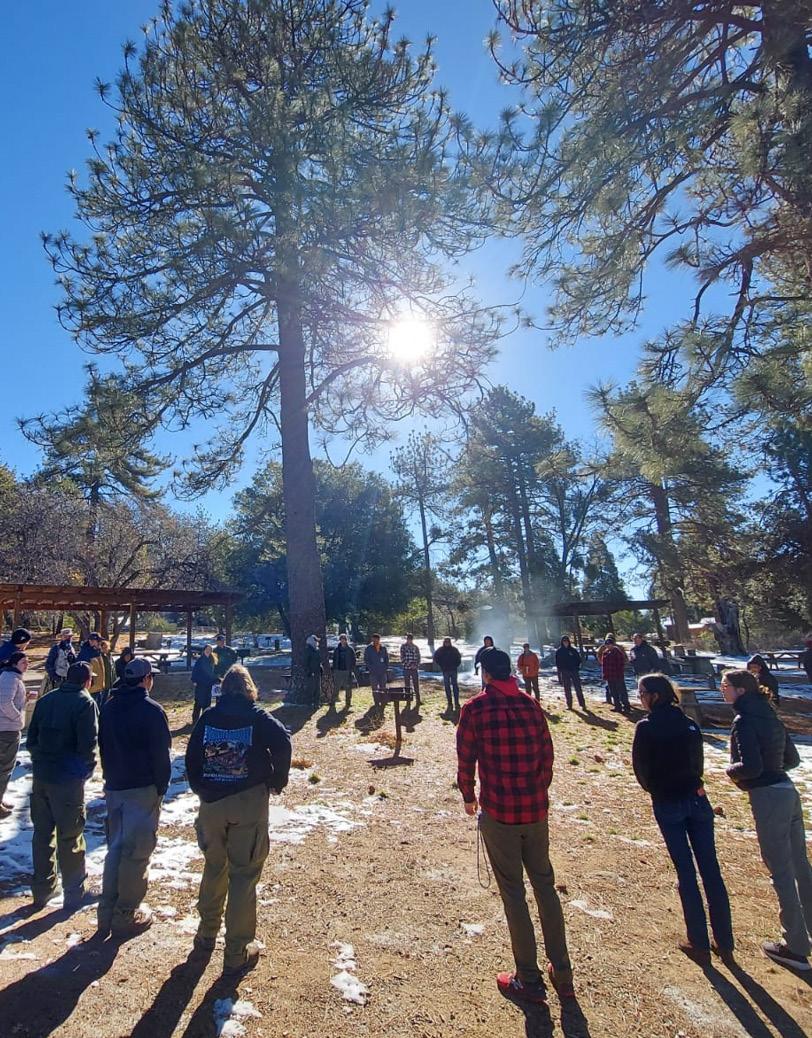
Since 2018, the Climate Science Alliance has held numerous large scale summits and gatherings to bring together local climate leaders and community members to discuss and advance strategies and solutions for climate resilience in the region. In 2018, the inaugural San Diego Climate Summit brought together 200 regional environmental leaders for an in-depth look at climate science and related issues, while providing a forum to discuss San Diego’s regional resiliency, built environment, and rich biodiversity. A plenary session was held on the San Diego County Ecosystems: The Ecological Impacts of Climate Change on a Biodiversity Hotspot report, part of California's 4th Climate Change Assessment (M. K. Jennings et al., 2018). Additionally, Climate Science Alliance team members and partners led two sessions
featuring climate communication lessons and activities, followed by an evening reception for the community and climate leaders to network and mingle.
The 2019 San Diego Climate Summit featured local researchers and climate leaders sharing key insights from California's 4th Climate Change Assessment and the San Diego Region Report. At the Summit, local entities shared highlights of climate adaptation strategies being pursued, and scientists provided a deep dive and demonstration into sea-level rise and coastal vulnerabilities in San Diego County. Additionally, the Summit held a climate messaging session for San Diego regional educators and featured art from two Affiliated Artists. Like many events during the early pandemic, the 2020 San Diego Climate Summit pivoted from an in-person event to a virtual experience. The virtual event convened 250+ local researchers, resource managers, community engagers, and youth leaders through an immersive and engaging experience to focus on our evolving understanding of regionally specific climate science and how it is informing on-the-ground solutions that build resilience
"An invaluable forum to bring together diverse audiences and identify opportunities to take action in an interdisciplinary way."
- 2018 SAN DIEGO CLIMATE SUMMIT ATTENDEEParticipants of a Wildland Fire and Fuels Management training convene at Cuyamaca Rancho State Park.
for people and places. Summit content was modified into a fun, engaging virtual interface where attendees were invited to “Choose Their Own Adventure” and path towards climate hope.
In 2021, the Climate Science Alliance leveraged the experience gained hosting a virtual Summit the year prior and partnered with the Southwest Climate Adaptation Science Center to co-host the 2021 Southwest Adaptation Forum , in lieu of the usual San Diego Climate Summit. This allowed for a collaborative, multi-day virtual event that brought together leaders, practitioners, and researchers from across the Southwest to explore efforts advancing climate change adaptation and resilience. The visioning for the Southwest Adaptation Forum was led by a group of recognized Tribal environmental professionals who are leaders in climate adaptation and represent a diverse composition of Indigenous Nations in California, Nevada, Utah, Arizona, New Mexico, and Colorado.
The Climate Science Alliance has co-hosted the Southwestern Tribal Climate Change Summit since its inception in 2017. This has since become a biennial gathering to advance strategies and solutions that support Tribal resilience in the face of climate change. The inaugural 2017 Southwestern Tribal Climate Change Summit provided environmental professionals from regional Tribes and other organizations an opportunity to meet and discuss strategies to respond to current policies, regulatory initiatives, and technical topics in responding to climate change impacts.
The 2019 Southwestern Tribal Climate Change Summit built on the conversations from the previous Summit to provide another opportunity to come together, focus on climate strategies and solutions, and advance Tribal resilience efforts. The Summit was an interactive leadership-style retreat with small group breakout sessions, plenary style presentations on Tribal case studies, and a powerful climate training opportunity for student ambassadors. Building upon the existing Climate Kids Ambassador program, the Summit featured the launch of the Youth Climate Challenge in which 37 youth participated in the entire event from communities across the southwest and Northern Mexico. Participants worked together to create 5 group projects, which were then seed funded by the Climate Science Alliance.
Delayed due to the COVID-19 pandemic, the Southwestern Tribal Climate Change Summit for 2021 was postponed until 2022, but continued to bring together large numbers of people including over 200 attendees representing 30+ Tribal communities to focus on the kinship with fire and its role in community, conservation, and climate change adaptation efforts.
The Climate Science Alliance understands the barriers many groups and individuals face to obtaining funding (e.g., limited staff capacity and time, complex reporting requirements, to name a few), and has seen firsthand how these barriers limit our community partners in pursuing, implementing, or continuing projects of value to our region. Sometimes, even a small amount of funding can make the difference between achieving a shared goal and canceling a project altogether.
Historically, the Climate Science Alliance has always made efforts to support our partners' visions—it is the foundation of many of our projects. Launched in 2022, the fellowships and regranting program has allowed us to recommit to our partners in a formalized manner that gives back directly and advances a more equitable model for grantmaking.

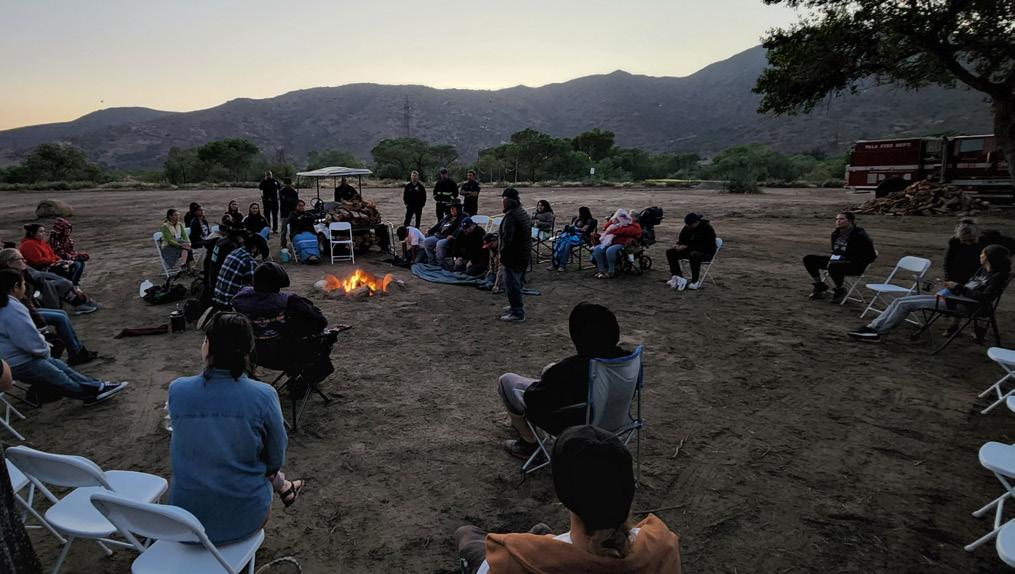
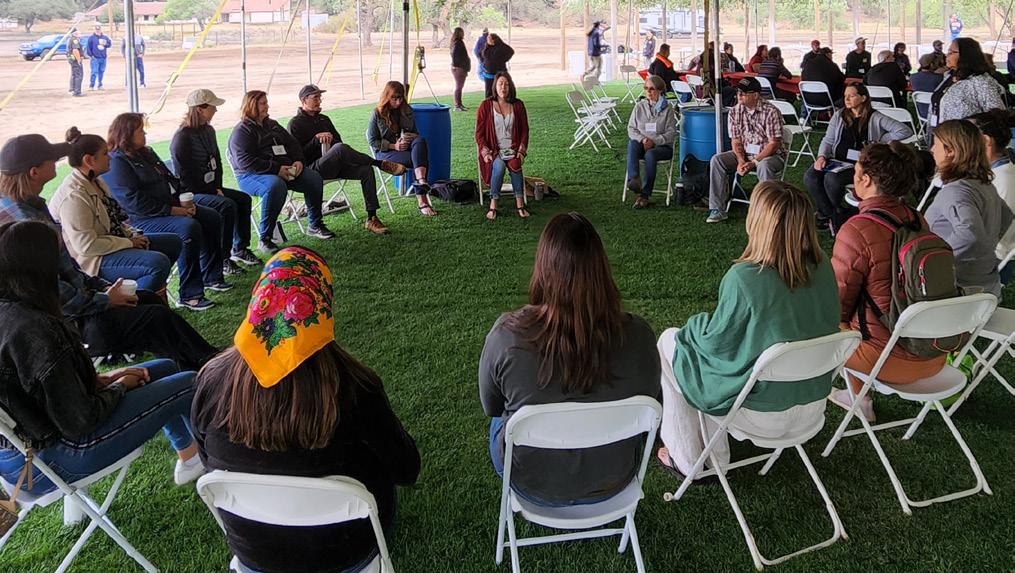
The 2022 Southwestern Tribal Climate Change Summit (SWTCCS) provided an opportunity to come together to focus on kinship with fire and its role in community, conservation, and climate change adaptation. By having a decolonized agenda, the Summit established an environment that provided attendees a different way to engage with content and speakers. Instead of set times and presentations, the Summit focused on relationship building and knowledge sharing.
The opening celebration kicked off the Summit with cultural presentations, food prepared by community cooks, and twenty booths featuring artisan vendors, cultural activities, and regional resources. Attendees took part in four different talking circles to share how they approach fire within their own Tribal communities and/or organizations. A panel of distinguished elders also shared their knowledge with the group.
Throughout the event, the reflection table provided a space for attendees to express themselves and their thoughts on their own relationship with fire through a group art project. Participants' input, written on small cloth squares, was stitched together to reflect the future of how we want to relate to fire. The final quilt continues to draw awareness to climate change impacts in Indigenous communities.
The event concluded with an intergenerational knowledge exchange where elders, youth, and knowledge holders shared stories and information about their kinship
with fire and building resilience against the impacts of climate change, and the role Indigenous peoples are playing in leading climate change adaptation efforts. An intentional effort was made to break away from the imaginary lines that divide us by including Indigenous elders from Baja, supported by live translators, resulting in a cross-border knowledge exchange between participants.

"[The Summit] was an amazing gathering with honest, helpful and sincere sharing to the end result of creating more climate change awareness and problem solving."
- 2022 SWTCCS ATTENDEESummit attendees participate in one of the talking circles. Artison vendor display at the opening celebtration. (Photo credit: Carlos Bravo) Summit attendees and community members observe a game of Peon at the conclusion of one of the days.
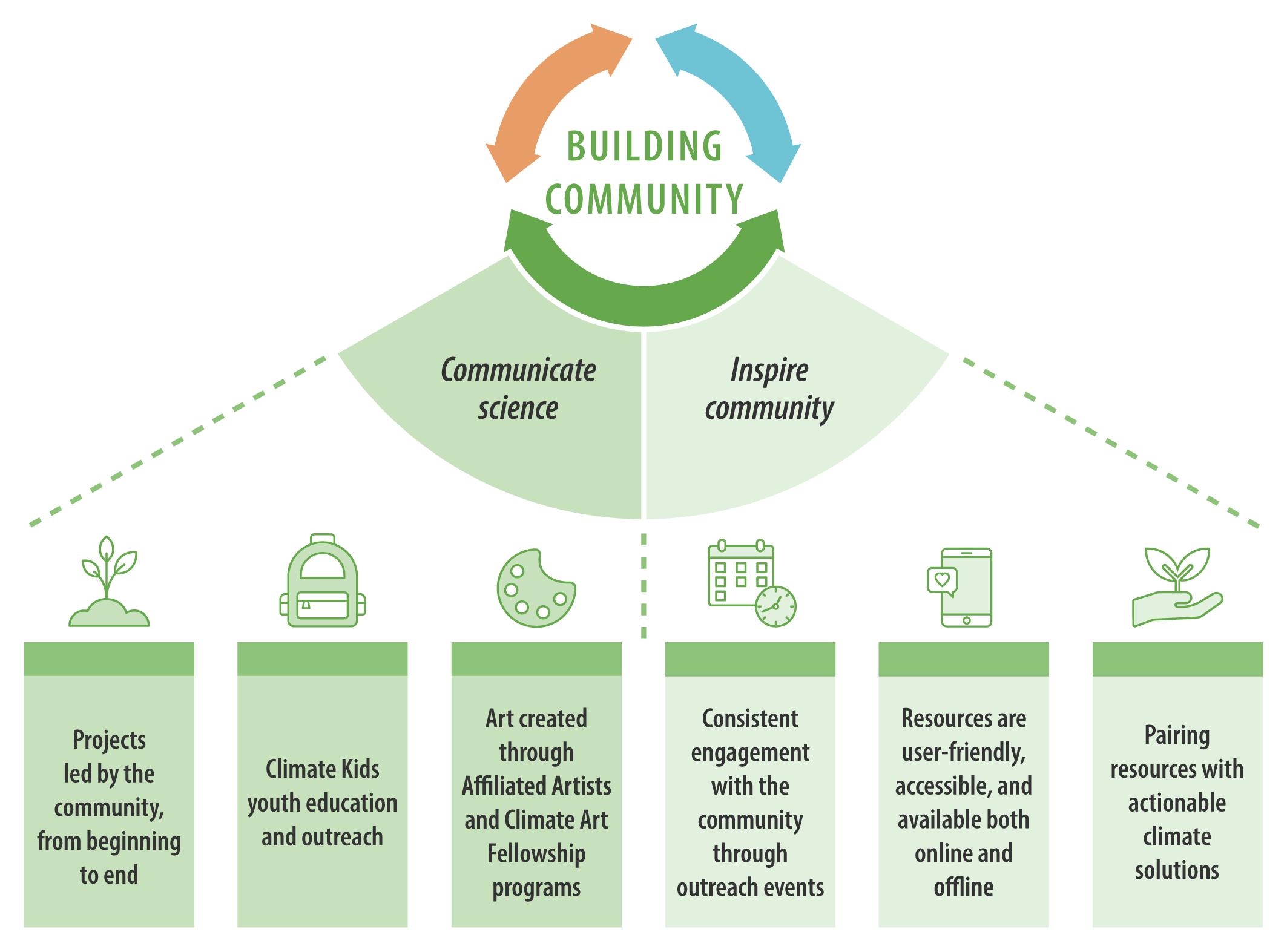
One of the prominent issues when it comes to addressing climate change effectively is repeated failure in delivering relevant and relatable climate science information to partners in a way that they can access and utilize (Singh et al., 2020). To address this, the Building Community component of the Alliance Model focuses on creating innovative and unique pathways for engaging and inspiring communities to take individual and collective actions that foster regional climate resilience. Through sustained and meaningful engagement and unique approaches to science communication and translation, the Alliance Model focuses on bridging the gap between climate research and the community (Figure 7).
Many of the Climate Science Alliance’s innovative community engagement projects focus on the role that individual actions can contribute to advancing regional adaptation through inspiring youth to action, creating artistic connections, bringing people together, and cultivating “climate hope”—a concept first introduced by long-time Climate Science Alliance partner and friend Ann Marie Chischilly at the 2019 Southwest Tribal Climate Summit. Believing deeply in inspiring a sense of hope rather than doom, the Climate Science Alliance has built a strong coalition of artists, educators, and climate researchers, skilled in curriculum development, educational and arts programming, and interdisci-
https://youtu.be/t0G6EwQcFqY
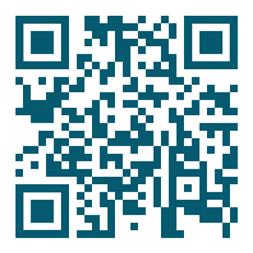
plinary outreach to advance regional understanding and awareness within our communities and with the public more broadly. Our team works with partners to incorporate alternative forms of communication—such as art and digital mediums—to create activities, experiences, and formal curricula that anchor conversations about climate change to place and personal experience in ways that engage and inspire. As a team, the Climate Science Alliance strives to reach people in both their hearts and minds, making climate change personal with pathways for pursuing a future filled with hope.
The Climate Kids program is a series of community-level collaborative projects that provide youth education on climate change through science activities, storytelling, and art. The Climate Science Alliance team believes in supporting youth to be the leaders they are now and into the future, while reminding them they are not alone in the challenges ahead, but rather supported as they explore and engage in climate adaptation solutions. Climate Kids programming incorporates hands-on science activities to demonstrate the process of climate change and its impacts; storytelling to engage students on the topic of climate change in a fun, relatable, and interactive way; and art to deepen students' understanding of climate change science and solutions by encouraging creative expression.
The Climate Science Alliance team works directly in the community through events and workshops that provide opportunities to interact on a personal level with youth and families, and also works extensively with formal and informal educators to build capacity for climate liter-
acy. The Climate Science Alliance team also helps build capacity by developing resources and implementing programming, including a train-the-trainer model, to support those interested in advancing climate literacy in formal and informal educational settings. Climate education materials created by the Climate Science Alliance team utilize clear, concise, and unifying messages and solutions (including National Network for Ocean and Climate Change Interpretation (NNOCCI) framing metaphors) across institutions and programming to develop a pathway to effectively integrate up-to-date climate science into educational programming and community outreach. By providing access to climate science and solutions through various resources, media, and locations, the team strives to make programming available equitably and in mediums that overcome the barriers presented by the digital divide.
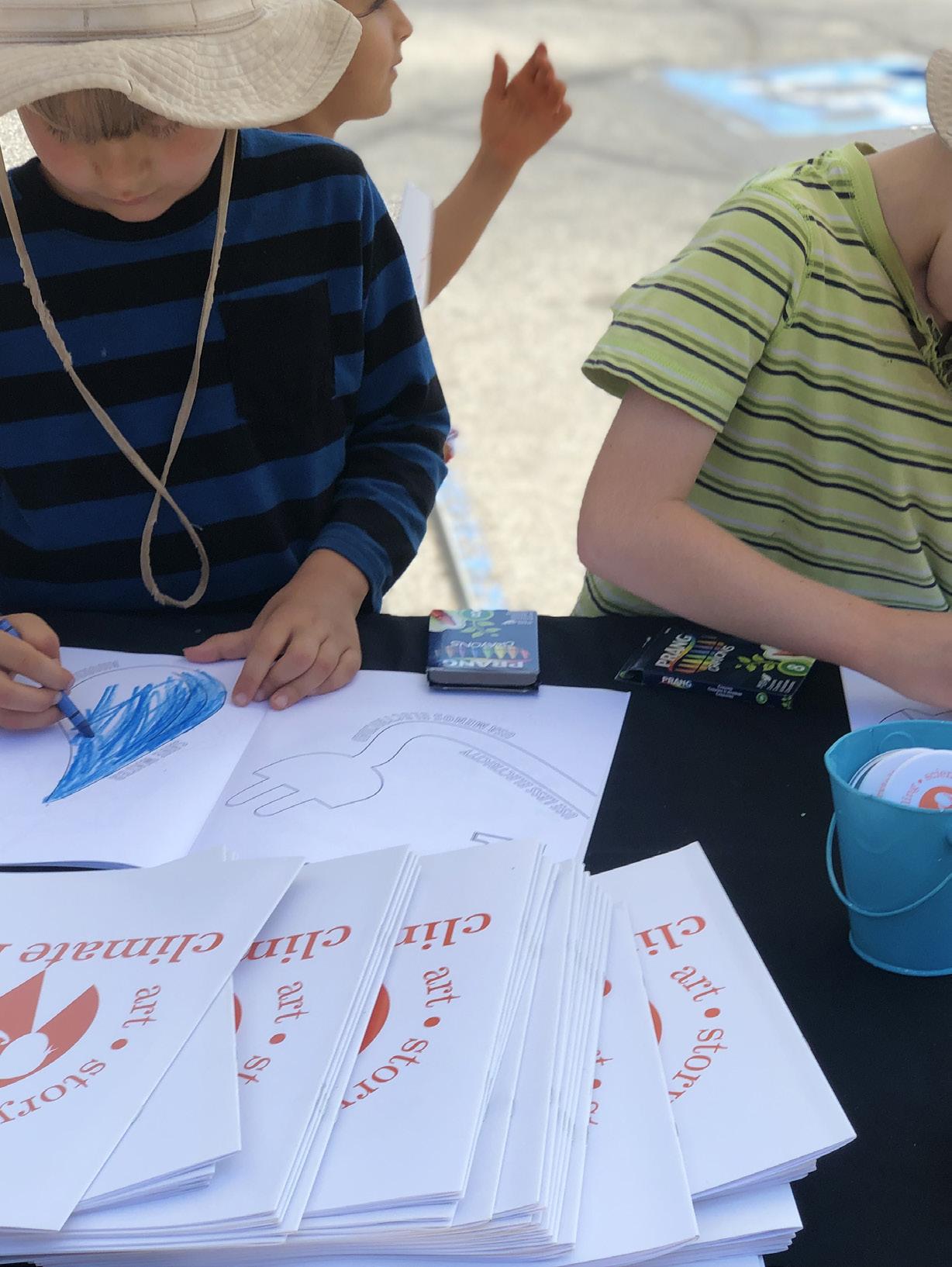
The Climate Science Alliance teamed up with local ecologists and climatologists to assess how climate change is impacting ecosystems and wildlife across the Southern California and Northern Baja California ecoregion. This region is a biodiversity hotspot and experiences the combined impact of climate change and rapid population growth.
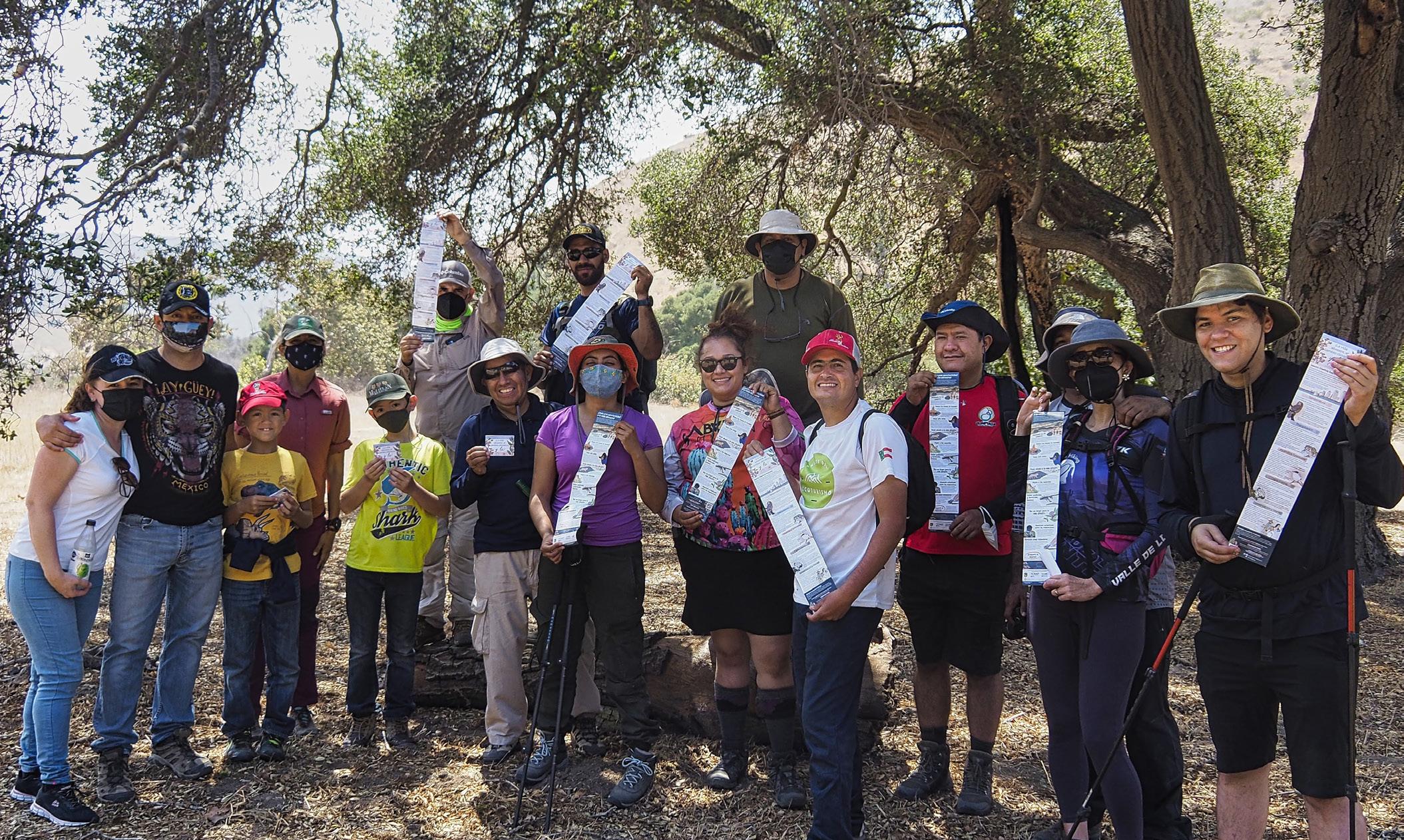
Key points from the resulting San Diego County Ecosystems: The Ecological Impacts of Climate Change on a Biodiversity Hotspot , which informed California’s 4th Climate Change Assessment, were summarized to create pocket guides in both English and Spanish. The guides summarize what we know about impacts to temperature, precipitation, wildfires, and the marine layer; and include how conservation and management is responding, as well as a list of individual actions that one can take to help.
These pocket guides were then made available across the City of San Diego Public Library System, to our Climate Kids Mexico partners, and are distributed at community events to this day.
Trainees of
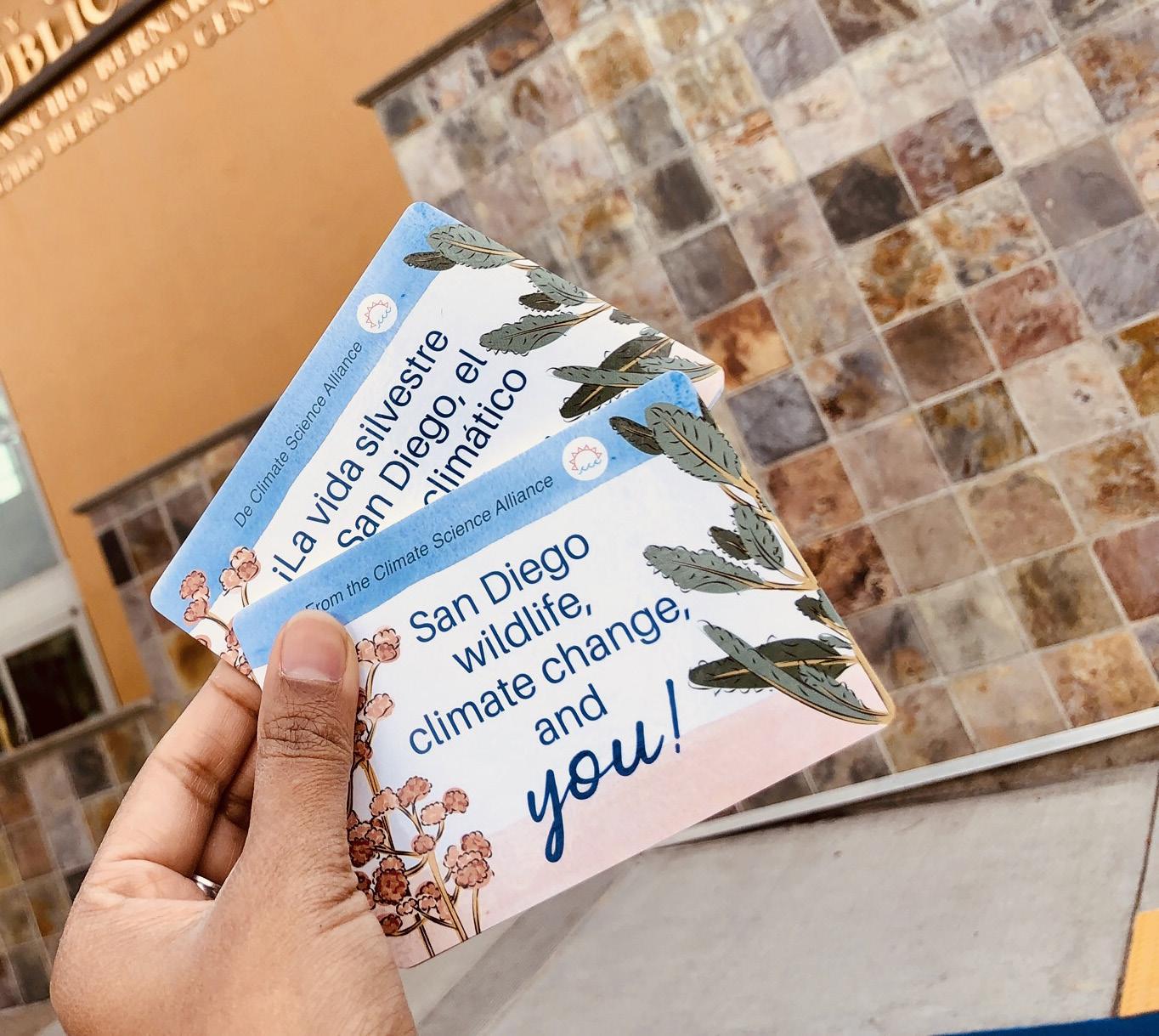



A highlight of the Climate Science Alliance’s innovative community engagement efforts is the Climate Art and Community Initiative. This initiative brings together a unique assemblage of artists working collaboratively with scientists and other community partners to help translate regionally specific science into decision support tools, making it accessible and easily understandable to community members that might not otherwise be engaged in climate science. The arts are a valuable tool for communicating and disseminating climate science to diverse audiences because of the way art cuts across culture, age, education level, and socioeconomic status. For example, the Climate Art and Community team created an Art of Change traveling art exhibit that was displayed at libraries, museums, and other community gathering places for more than four years reaching thousands of community members before the COVID-19 pandemic halted all shows.
Artists play a key role in our research projects and are engaged early in the process. Art is not the window dressing at the end of a project but rather artists are part of the co-production of knowledge that lays the foundation for a project from its inception. In addition, community art projects, led by artists at public events, provide an opening to engage in conversations with community members who might otherwise be reluctant to interact. The time spent contributing to an art piece allows a more relaxed atmosphere to listen, ask questions, and learn from each other. These conversations are important entry points to engaging and hearing what community members are concerned about as well as where they find hope.

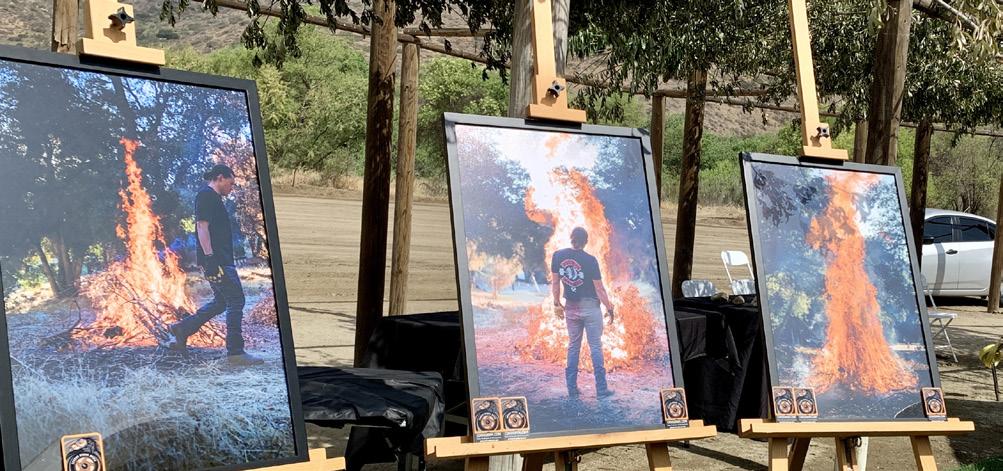

The Climate Science Alliance created a Climate Art Fellowship in 2018 to provide a space for an artist to work together with partners, affiliated researchers, and community leaders to help us better interpret and communicate climate impacts and solutions in unique and novel ways. Leveraging art to move beyond maps, graphs, and P-values can help community members better understand impacts so that they can help make informed decisions that will enhance their personal and community’s resilience to climate change impacts.
Our inaugural Climate Art Fellow was Audrey Carver, a long-time Affiliated Artist of the Climate Science Alliance. Audrey spent the summer of 2018 with the Climate Science Alliance team and research partners and toured our unique ecosystems to gain insight and inspiration for her assigned project—to translate the findings of the report, San Diego County Ecosystems: The Ecological Impacts of Climate Change on a Biodiversity Hotspot . The resulting product Audrey created was the Faces of Change watercolor series. To help people better understand the report and better connect with the science on a personal level, Audrey used each watercolor painting to
illustrate a specific climate impact on a key species from each chapter and then added a portrait of a member of the community who will be directly impacted. This body of work brought a level of emotion and connection that better explained the findings of the report and how it directly connects to our communities and the people we live near and care about. This body of work had a strong impact on our partners and the public and solidified our commitment to continuing the Climate Art Fellowship as a yearly endeavor.
The Climate Science Alliance team has been lucky to create relationships and leverage projects that can support an art fellow almost every year. In 2019 Dr. Nigella Hillgarth served as our 2nd Climate Art fellow and spent the summer with the National Science Foundation Center for Aerosol Impacts on Chemistry of the Environment (CAICE) for their SeaSCAPE Experiment. In 2020, Fellow Kim Reasor, was hosted in collaboration with the Institute for Ecological Monitoring and Management at San Diego State University to share findings of the research project, Connecting Wildlands and Communities (CWC). In 2021 and 2022 we were fortunate to work with Andrew and Lisset Pitman from Condor Visual Media to pursue a full-length documentary film focused on Indigenous Fire Stewardship. This program continues to evolve as we work to integrate art and community into all aspects of our research and programming. We are grateful for the talent and heart that our partners bring to our collaborative efforts.
The Alliance Model integrates all three components (Building Resilience, Building Capacity, and Building Community) simultaneously to advance projects and partnerships that further regionally specific climate science and solutions while disseminating and integrating this information in the community in ways that made it usable and relevant. Leveraging its role as a boundary-spanning organization and building on its model of community-led adaptation, the Alliance Model helps translate science in real time, builds trust among partners, expands capacity, leverages funding, and garners support for action with a wide array of outputs in a short amount of time (Figure 8).
$6m inclimate funding 3. 7k professionalstrained forcommunities
250k youth reached
Sustained and meaningful engagement along with the integration of the three Alliance model components— Building Resilience, Building Capacity, and Building Community—are foundational to pursuing holistic, interdisciplinary, multisector projects that advance transformational climate adaptation at multiple scales.

The Connecting Wildlands and Communities (CWC) project exemplifies this advancement towards transformational climate adaptation, while incorporating key elements including: 1) partner-led working groups that support coordination and foster opportunities for co-production and sustained engagement, 2) outreach, training, and tools that build capacity for partners to use and integrate information into their work, and 3) innovative outreach through Climate Kids and Climate Art and Community activities that guide the integration of the three components in a complementary fashion.
In the early phases of the development of the Climate Science Alliance, there was a focus on identifying research and information needs among network partners. One of the main needs that was identified was the need for a regional assessment of existing research to better understand research gaps and regionally specific adaptation opportunities and solutions. In response, the Climate Science Alliance convened a distinguished, bi-national team of ecologists and climatologists to formulate a scientific assessment entitled, San Diego County Ecosystems: Ecological Impacts of Climate Change on a Biodiversity Hotspot (Ecosystems Assessment) (M. K. Jennings et al., 2018).
The Ecosystems Assessment was published as a technical report for the State of California’s Fourth Climate Change Assessment and was the first of its kind in disseminating regionally specific climate hazard information for natural communities in Southern California, and information on how managers and communities can prepare to address these vulnerabilities through adaptation, conservation, and landscape management. This Ecosystems Assessment did not have any direct
funding or mandate, but rather was a direct result of the power and motivation of the Climate Science Alliance partnerships.
To ensure this information made it into the hands of people that could use it, the Climate Science Alliance then translated and disseminated the Ecosystems Assessment results for different audiences so that the results were in accessible formats to local managers, stakeholders, and the public to inform natural resource planning, decision-making, and management. A condensed version of the report was developed and presented at the 2019 San Diego Climate Summit using panel presentations on how to apply the research for management applications. Roundtables between researchers, managers, commu-
"[The San Diego County Ecosystems Assessment] is an excellent example of climate smart conservation planning and highlights the value of having downscaled modeling and localized assessment."
- MIKE GRIM, CITY OF CARLSBADPanelists at the 2018 San Diego Climate Summit.
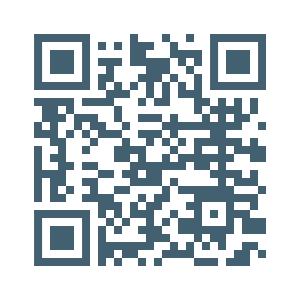
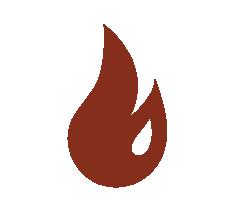


Wildlands
Interaction of fire and vegetation: vegetation as fuel, and shifts in vegetation caused by fire
Human Communities
Understanding patterns of fire risk to communities; Reducing fire risk through land-use planning
FIRE + WATER
Wildlands
Infiltration, flow, and erosion under varying conditions for wildland-dominated segments of watersheds
Human Communities
Availability and quality of water coming from wildlands in comparison with urban segments of watersheds
Role of precipitation and infiltration in vegetation moisture; effects of post-fire landscape on erosion, infiltration, and downstream water quality
Wildlands
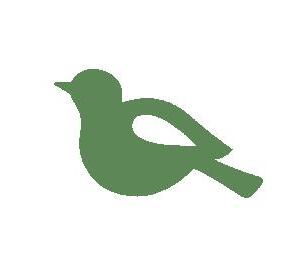


Role of connectivity in supporting biodiversity and access to climate-safe spaces
Human Communities
Access to open space and balancing of recreational uses with conservation goals
Role of connected, natural lands in water availability and filtration; importance of water to ecosystem health, riparian resilience
Impact of fire on connected landscapes (management and restoration); opportunities to conserve to avoid development in fire-prone areas
• Access to open spaces
• Water quality and quantity preserved



• Reduced fire risk
• Strategic planning to conserve areas of value for biodiversity, water, and carbon sequestration
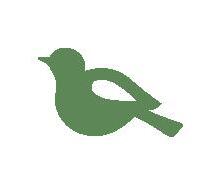

• Identifying areas to accommodate growth where fire risk is lower
• Information to guide management of multiple uses of natural lands

• Targets for acquisition and restoration to improve climate resilience of communities and natural lands
• Integrated multiple-benefit framework for land-use planning that can support conservation planning
www.climatesciencealliance.org/cwc
Figure 9. The Connecting Wildlands and Communities project engages with a diverse set of stakeholders across southern California to take a comprehensive planning approach to protect rural communities, mitigate wildfire risk, support water sustainability, and protect biodiversity by providing an integrated planning and decision-making framework that supports multi-benefit landscape-scale planning integration.

nity leaders were also held to discuss real world applications of the science, and a training for educators focused on incorporating regionally specific climate science into outreach for youth and families. Following the summit, the Alliance team and its members developed science briefs for practitioners, educational materials for schools and educators, a public outreach campaign, and an art installation to bridge the gap between climate research and community. These efforts led to many partners using the information directly in their planning work.
The Ecosystems Assessment served as a baseline for further discussions among researchers, adaptation practitioners, and community members on how to build on this model. What resulted was the launch of a series of projects that have acted as stepping stones to advance transformational adaptation actions driven by the vision and involvement of community partners. This series of projects are now all part of the largest interdisciplinary, cross-sectoral effort the Climate Science Alliance had undertaken to date, the Connecting Wildlands and Communities project (CWC).
The Connecting Wildlands and Communities project brings together an interdisciplinary team of planners, environmental engineers, ecologists, and geographers to explore how connected landscapes can support adaptation and resilience to climate change for both ecosystems and local communities in Southern California (Figure 9). This project takes a comprehensive planning approach to meet State objectives on protecting rural communities, mitigating wildfire risk, supporting water sustainability, and protecting biodiversity.
The goal of the research is to provide an integrated planning and decision-making framework that supports multi-benefit landscape-scale planning and facilitates science-informed climate adaptation and strategies across the region. The CWC team worked alongside
interdisciplinary Climate Science Alliance partners to co-produce information and tools in support of climate adaptation planning (Figure 10).
The CWC project was designed to be inclusive of partners across a broad geographic extent and across sectors, and to incorporate a wide range of potential climate impacts to bridge the gap in adaptation planning for wildlands and built communities with a focus on moving beyond planning to implementation. One of the hallmarks of the CWC project was a focused effort to produce research through science-focused partnerships (Building Resilience), leveraging the team’s history of providing science in service of planning and management as embedded members of the research and climate adaptation community. These strong stakeholder networks enabled collaboration with experts from local governments, Indigenous communities, resource management groups, planning organizations, academia, and non-governmental organizations. This included engaging with the Tribal Working Group, who shared perspectives to support the incorporation of Indigenous knowledge and stewardship into the research and guided the development of project products to best support Tribal adaptation planning.
The products that stemmed from CWC were created to be complementary to other planning resources and easily accessible—designed with different end-user groups in mind (Building Capacity). These products were informed by partner input, including interactive map products that can be readily integrated into planning practice, an adaptation menu to connect the research to planning and decision-making, and case studies to highlight examples of adaptation in action. In the same spirit of dissemination and information sharing that presented the Ecosystem Assessment to partners at the 2018 San Diego Summit, the CWC project was the focal point of
"The type of work that is being done through the CWC project is critical in developing effective plans and policies, and communicating with decision-makers and the publicat-large regarding choices that can be made to protect all of us."
- BOB LEITER, ENVIRONMENTAL PLANNER
Connecting Wildlands and Communities

Leveraging community led co-production, innovative capacity building, and multi-generational and multi-discipline outreach for large scale impact

Leveraging interdisciplinary team and multiple pathways for outreach to di erent audiences
Standalone climate research
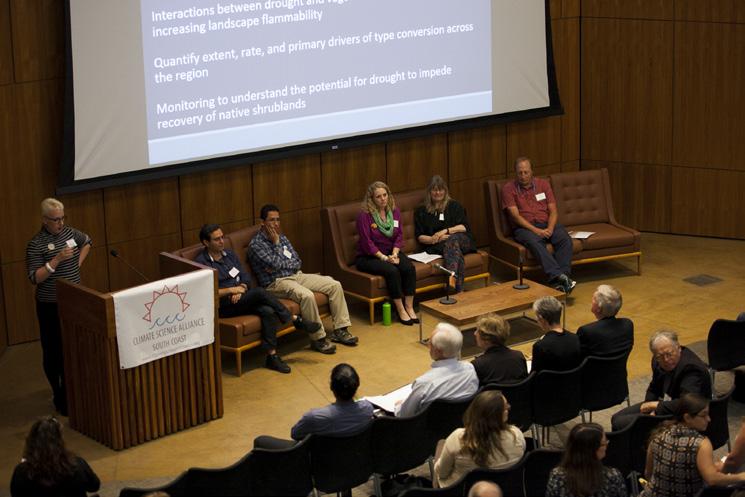
the 2021 Southwest Adaptation Forum, presented as a model for transformational adaptation.
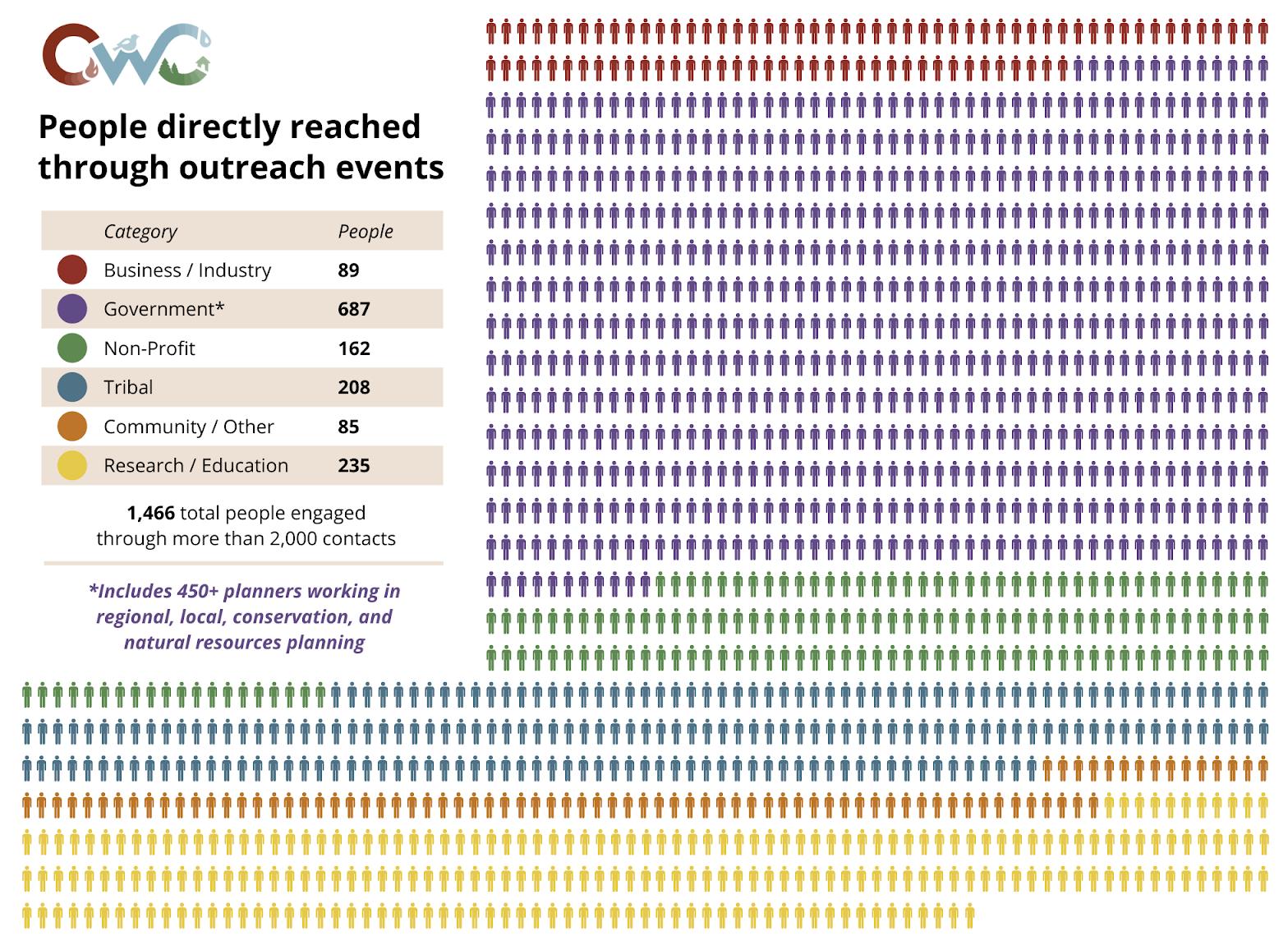
Meaningful engagement was a central part of project development for the CWC team with a focus on translating science (Building Community). Partner involvement and feedback guided the project from inception to completion through events such as brainstorming workshops, project presentations, town hall meetings, technical advisory groups, input from the Climate Science Alliance Tribal Working Group, as well as a forum designed for adaptation practitioners to experience and use tools first hand as they applied research results directly into their work products (Figure 11).
A Climate Kids module featuring carnivores was developed to explore teaching youth and community members about concepts of connectivity for wildlife conservation and climate adaptation. The curriculum and outreach programming was focused on encouraging youth to think about important connections that help build resilience for wildlife and people within their own communities. Additionally, as part of the Art and Community initiative, two artists joined the project team to develop works inspired by CWC’s research and community engagement. The first was a series of artistic pieces entitled Connected Lands. Connected People , created by 2020 Climate Art Fellow Kim Reasor, that featured research
themes focused on fire, climate refugia, and striking a balance in managing wildlands and communities (See call out box on page 22 for more information about the Climate Art Fellowships). The second was designed by an Alliance early-career Affiliated Artist Audrey Carver, who created the Resilient Connections Storymap, featuring watercolor interpretations of the project’s map products to accompany partner stories about climate impacts across natural and human landscapes. In addition, Affiliated Artist Andrew Pittman, of the Indigenous-led Condor Visual Media team, produced a project video using engaging visuals and storytelling to capture the full process and intent.
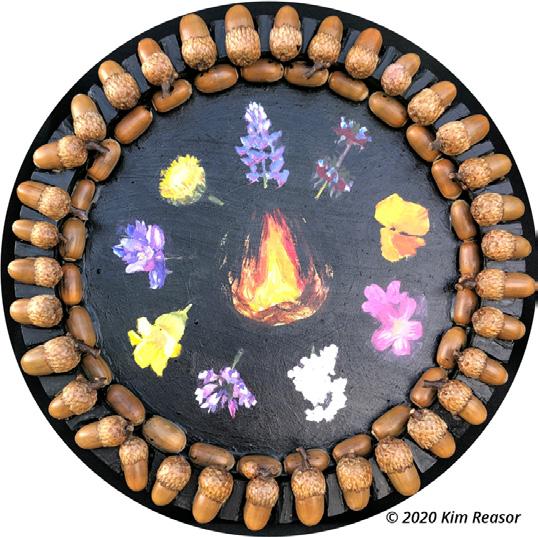
Throughout the project, the Climate Science Alliance staff used graphic design to establish a brand and elevate project materials from flyers and a website to presentation slides, videos, as well as newsletters and blog posts. This ensured cohesion between the many project components.
Connecting Wildlands and Communities is but one example of several projects the Climate Science Alliance has undertaken executing the Alliance Model. See final section, "Dig Deeper", for more examples of the Alliance Model in action across geographic regions, topics, and partners.

The "Connecting Wildlands and Communities Project Overview" video, by Affiliated Artist Andrew Pittman of Condor Visual Media

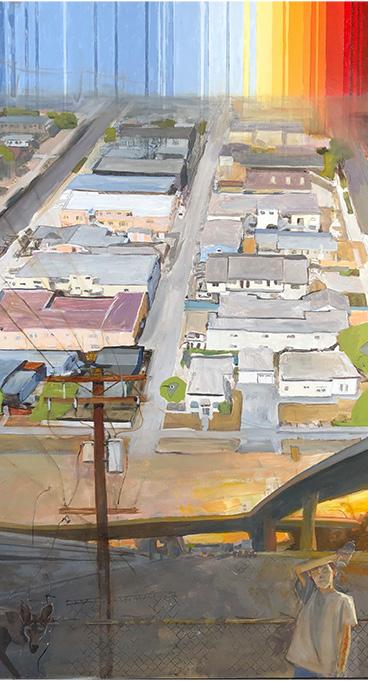

https://youtu.be/wHkk7cE0WcA
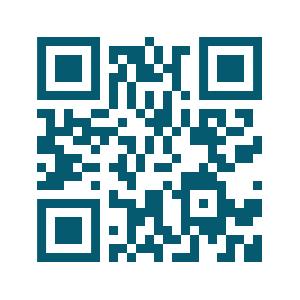
• 20 person Vision Team establish the Climate Science Alliance foundation
• 80 organizations join the Climate Science Alliance network in first year
• Launched an internship program for 4 early career professionals to start building organizational capacity
• 75 members of the science-focused partnership workgroup identified shared priorities for research across the region launching collaborative research and grant proposals
• Held 10+ workshops to advance climate smart conservation with a focus on nature based responses
• First workshops for Climate Smart Conservation held in Spanish
• Convened local artists in St. Louis for a climate change art show and discussion at the National Adaptation Forum
• Launched Climate Kids projects in San Diego, St. Louis, and Mexico
• Reached more than 1,500 students including 600 elementary and high schools students in Mexico
• Solidified partnerships to pursue Climate Kids Tribes in 2016
• Grew to 130 partner organizations including 240 individual partners—representing academic, non-profit, business, local state, federal, and Tribal sectors
• Secured funding to maintain a core team of 4 Climate Science Alliance staff including a Science Program Manager and Climate Kids lead
• 4 large-scale research collaborations established around climate change influence to landscape connectivity, ecoregion vulnerability, coastal resilience planning, and research needs
• 26 local case studies created to illustrate specific actions that are being taken to safeguard our natural resources and communities
• 34 training events held, strengthening regional resilience through capacity building, information sharing, and building a community of practice around climate-smart adaptation
• 16 community events undertaken, in partnership with artists, libraries, museums, and schools in the South Coast ecoregion and Baja California—reaching thousands
• Launched the Community and Art Initiative and developed an Affiliated Artists program
• Hosted 10 climate art events
• 12,000 students reached through the Climate Kids programming

• Climate Science Alliance Network grows to 200 partner organizations
• Maintained funding for the core team, and added a graphic designer to support communication
• 6 large-scale research collaborations undertaken bringing scientists and managers together.
• Co-produced and published 2 reports for community partners—San Diego County Ecosystem Assessment & Batiquitos Lagoon Resiliency Plan
• Developed 37 local case studies on climate adaptation actions to promote our partners
• 1,000 professionals trained through 28 capacity-building trainings, workshops, and conferences
• Co-hosted the inaugural Southwestern Tribal Climate Change Summit, with 190 Tribal professionals
• 91,000 community members reached through 21 community events including 54,000 youth including 2017 Balboa Earth Fair
• Launched Art of Change rotating art show to engage the community in climate change topics using art from our Affiliated Artists network, youth in our Climate Kids program, and collaborative art created at community events
• 13,000 individual contacts reaching 9,000+ students with multi-day Climate Kids programs
• Climate Kids Traveling Trunks Program launched
• 281 partnering organizations now part of the Climate Science Alliance Network
• Maintained funding for core team, and added Deputy Director role to aid in organizational oversight
• Launched DUNAS (Descendants United for Nature, Adaptation, and Sustainability) a multi-year project in Puerto Rico on climate adaptation and cultural heritage
• Concluded Climate Resilient Connectivity project which served as a stepping stone for projects that continue today
• First meeting of the Tribal Working Group with partners from 12+ Tribal Nations
• 942 professionals participated in 22 capacity-building trainings, workshops, and conferences
• Hosted the inaugural San Diego Climate Summit, with 200 people in attendance
• 100,000 community members reached through 18 community events—including 6 Tribal Earth Days and the 2018 Global Climate Action Summit
• Hosted 10 community art events
• Launched Climate Art Fellowship for an artist to engage with the San Diego County Ecosystems Assessment
• 26,420 youth participated in the Climate Kids program
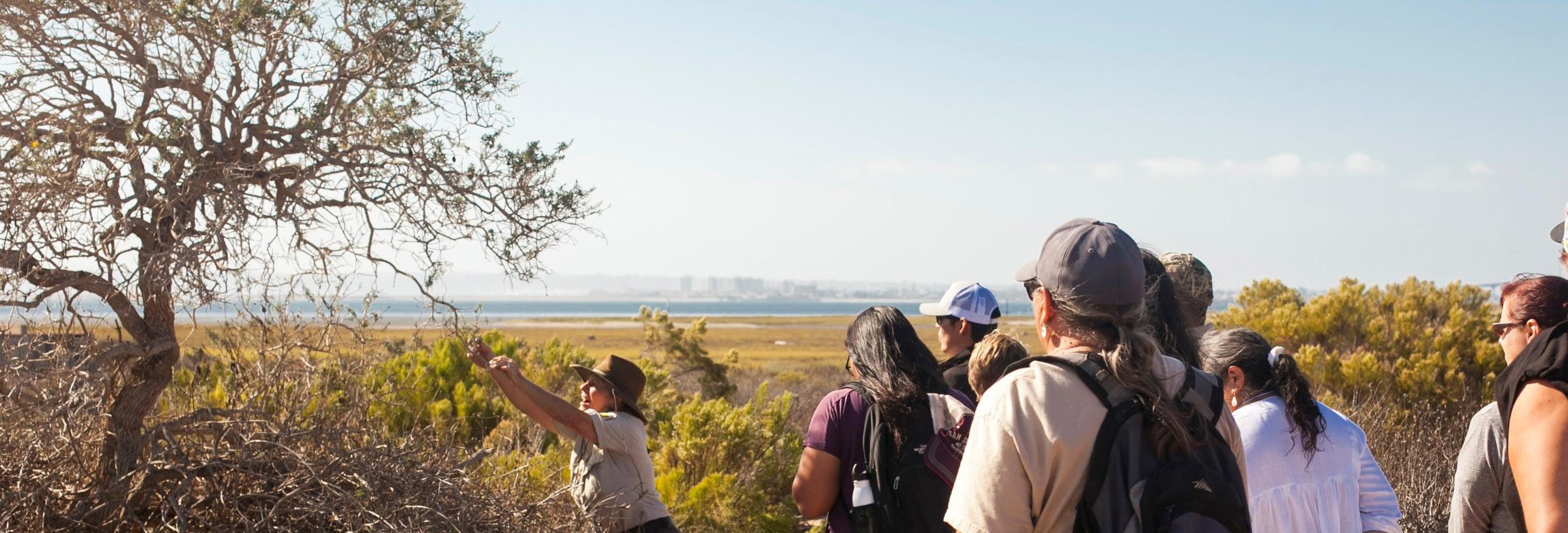
• Over 340 diverse partnering organizations make up the Climate Science Alliance Network
• Maintained funding for core team, and added Research and Data Applications Program Manager to provide technical support for Intertribal and cross-disciplinary initiatives
• Supported 12 successful collaborative grant proposals totaling over $1,000,000 to support our partners and projects in the region
• The Connecting Wildlands and Communities team garnered critical feedback from 118+ stakeholders, including Tribal partners
• Puerto Rican community members provide 3,430 volunteer hours for the DUNAS project
• Tribal Working Group grew to include representation from 20+ Tribal Nations
• First convening of the Binational Working Group
• 250 attendees convened at the 2019 San Diego Climate Summit
• The 2019 Southwestern Tribal Climate Change Summit gathered over 143 practitioners representing 34 Tribal Nations
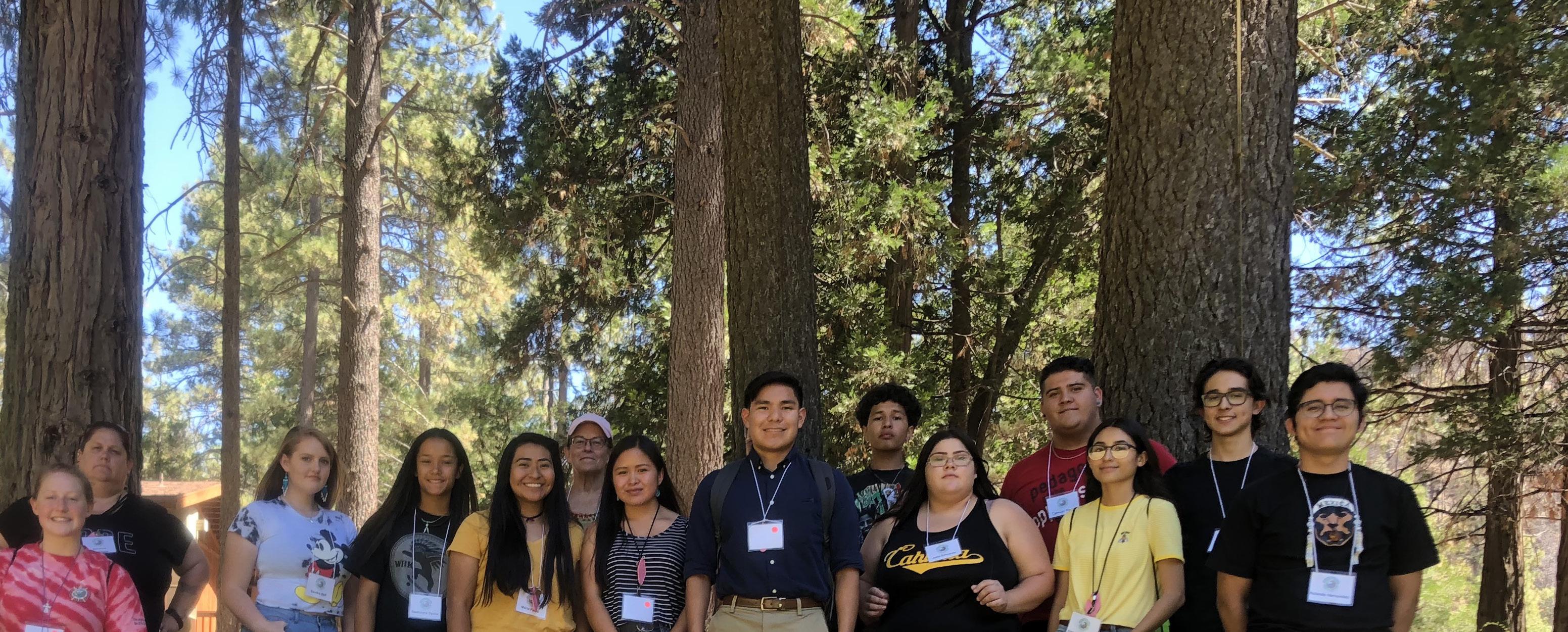
• 160 community events with over 60,000 people in attendance
• 14 community art events
• 34 youth leaders participated in the Climate Kids Youth Climate Challenge
• Climate Science Alliance Network reaches 400 partnering organizations
• Maintained funding for the core team and added a new position, Tribal Capacities and Partnerships Program Lead, to support sustained and meaningful engagement
• Launched a new website to better highlight our team, efforts, and partners
• 12 science-focused collaborations including lead roles in Connecting Wildlands and Communities and Resilient Roots: Climate Smart Agriculture and Food Systems
• Finalist for National Connectivity Challenge hosted by the Salazar Center
• Climate Resilience Fellowship established to launch Binational Working Group
• 278 attendees joined the virtual 2020 San Diego Climate Summit
• Climate Art Fellowship focused on Connecting Wildlands and Community project
• New Climate Kids Module launched on Resilient Roots: Connecting Climate and the Food System
• Climate Kids Connects launched to increase online access to education materials
• 440 partnering organizations make up Climate Science Alliance network
• Maintained funding for the core team, and added a Community Resilience Lead with a focus on supporting Indigenous-led projects
• Launched Resilient Restoration: Advancing Resilience with Tribal Nations in Southern California project led by Tribal Working Group and partnering with San Diego State University and UC Riverside

• Binational Working Group supports 2 projects and publishes Climate Change & the Baja California Peninsula report
• Collected, donated, and delivered over 6,000 personal protective equipment items including face masks, shields, hand sanitizer, gloves, and other cleaning supplies to those in need
• Addressing digital divide with Climate Kids Book Club project
• Led session at San Diego Design Week to discuss our model of science dissemination through art and graphics
• Co-developed virtual Climate Change Speaker Series in partnership with San Diego Natural History Museum reaching thousands of people across California and Mexico
• New Climate Kids website developed to share the program’s five-year history and unveil education resource portal— Climate Kids Connects
• Fourth annual Climate Art Fellowship supports Indigenous artist to explore Tribal Fire Stewardship for the virtual 2021 Southwest Adaptation Forum
• Climate Science Alliance Network grows to 460 partnering organizations
• Maintained funding for 6 core staff, added 2 new positions, Intergenerational Education and Outreach Lead and Indigenous Stewardship Coordinator
• Changed organizational structure to reflect a more equitable horizontal leadership with 2 new Co-Directors and Program Leads to reflect the leadership that all team members provide
• Adopted Indigenous Data and Knowledge Sovereignty Policy created by the Tribal Working Group
• Launched Southern California Montane Forest Project
• New project to establish Tribal Fire and Fuels Crew and build capacity for Tribal Fire Stewardship
• Launched Stewardship Pathways training program focused on economic development for Tribal communities around native plant propagation and Indigenous fire stewardship
• Launched Indigenous Regranting program, supporting the development of a Tribal Working Group for the Great Basin region
• Launched Indigenous Climate Fellowship program, hosting 2 Fellows
• Launched Small Grants program for Binational Working Group, supporting 5 projects
• The SW Tribal Climate Change Summit gathered over 200+ attendees representing 30+ Tribal Communities
• Climate Science Alliance joins collaboration to launch Climate Kids Caribbean
• Fifth annual Climate Art Fellowship supports documentary, The Fire Within Us, by Condor Visual Media
As a way to evaluate the impact of the Alliance Model and the success of its efforts to advance transformational adaptation, in 2021 we conducted a survey of Climate Science Alliance partners to capture successful outcomes, input on whether products are used and useful, and how partners are engaging with the organization, one another, and our products. The online survey, distributed via email and social media, was designed to take less than five minutes to complete and included 14 multiple choice questions in which four had the option for an open-ended response. All responses were voluntary and anonymous.
A total of 96 individual responses were submitted and compiled together alongside information gathered from annual impact reports covering 2015-2020. Overall, the key elements of success as articulated by partners focused on the organization's commitment to co-production and equal valuation for different ways of knowing (Building Resilience); training and tools that support integration, replication, and transferability (Building Capacity); and sustained and meaningful engagement that builds trust and a sense of community among partners (Building Community).
As the Alliance Model has matured over time, its social capital and engagement potential has expanded. Over 75% of the survey respondents reported either referring a colleague or organization to the Climate Science Alliance and/or its resources, or contacted/worked with the Climate Science Alliance team directly. In the survey, respondents noted that “The Climate Science Alliance is a great example of ethical and collaborative partnership building” and they “... see the organization as the catalyst to connect others to create meaningful change.” This has allowed the network to leverage costs and opportunities and forge new partnerships among climate researchers, jurisdictional planners, natural resource managers, and community members.
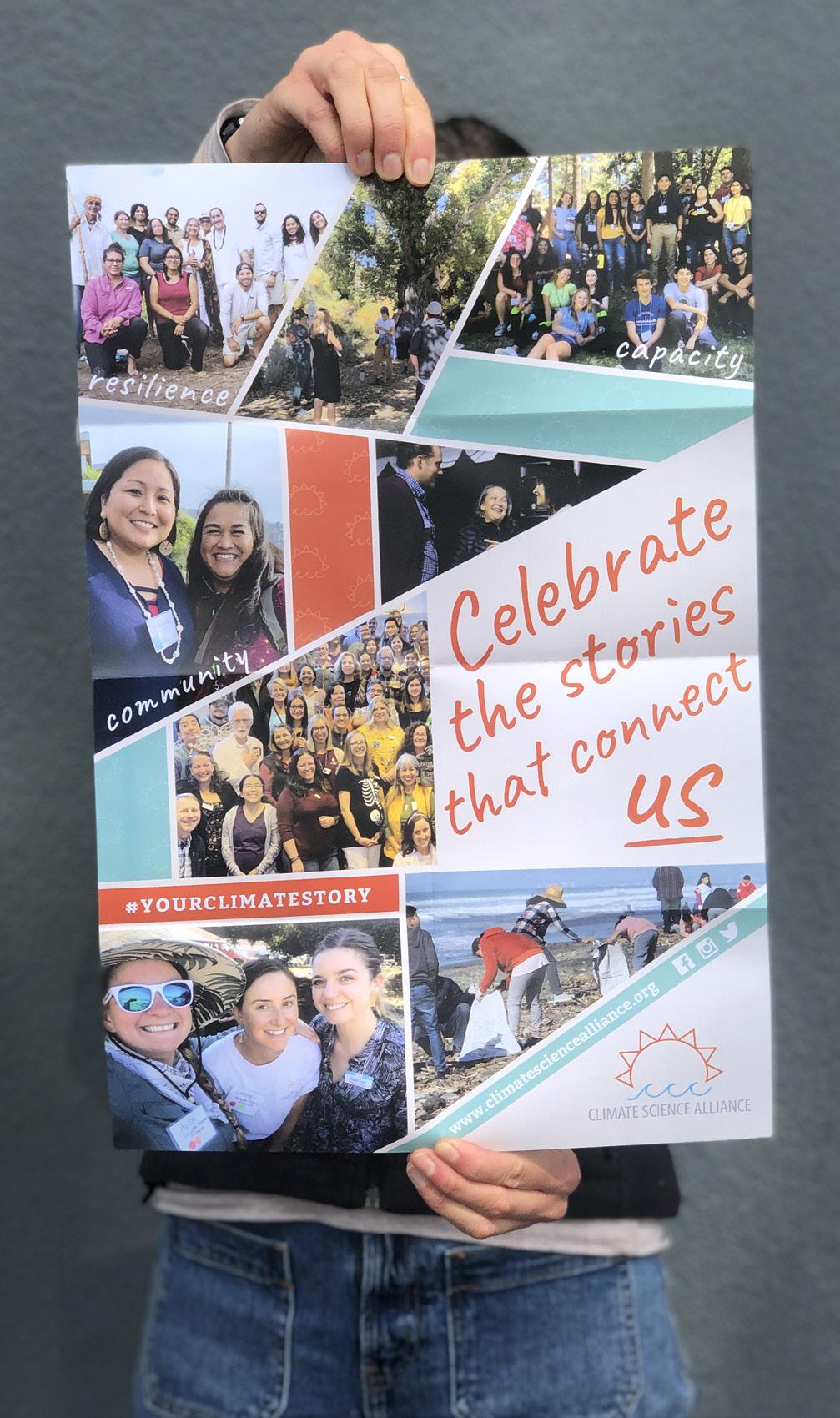
"The Alliance's model for equitable power sharing within the Alliance's structures, as well as in your initiatives and external partnerships, is powerful. Thank you for leading by example."
- ANONYMOUS SURVEY RESPONDENT, 2021Climate Science Alliance team member holds up the 2019 Impact Report Poster
Between 2015 and 2020, the number of partners involved in the Climate Science Alliance grew steadily from 80 organizations and agencies to 400. Partnering organizations are diverse in their composition and equally spread among governments (Tribal, state, federal, and local), academic research institutions, non-profit organizations and foundations, business-private enterprises, and community members including artists and educators. When asked why they choose to participate in Climate Science Alliance projects, events, trainings, and workgroup meetings, survey respondents indicated a range of reasons including:
What is clear from these results is that all components of the Alliance Model provide value to our partners in a significant way. This serves as both a reflection of the diversity of our partners and their needs, as well as the merit of our community-led approach.
Since the organization’s inception, that Alliance team has maintained a commitment to advancing equal valuation of ways of knowing, creating space for collaborative co-production, and advancing opportunities for directing funding to partner-led projects. With this in mind, partnerships created through the Climate Science Alliance have created, funded, and implemented 15+ largescale interdisciplinary, multi-sector research projects and brought in over $6M in climate funding to the region for research, planning, and on-the-ground projects. These large-scale collaborations demonstrate the impact of interdisciplinary co-production that maximize efforts to build capacity at multiple scales.
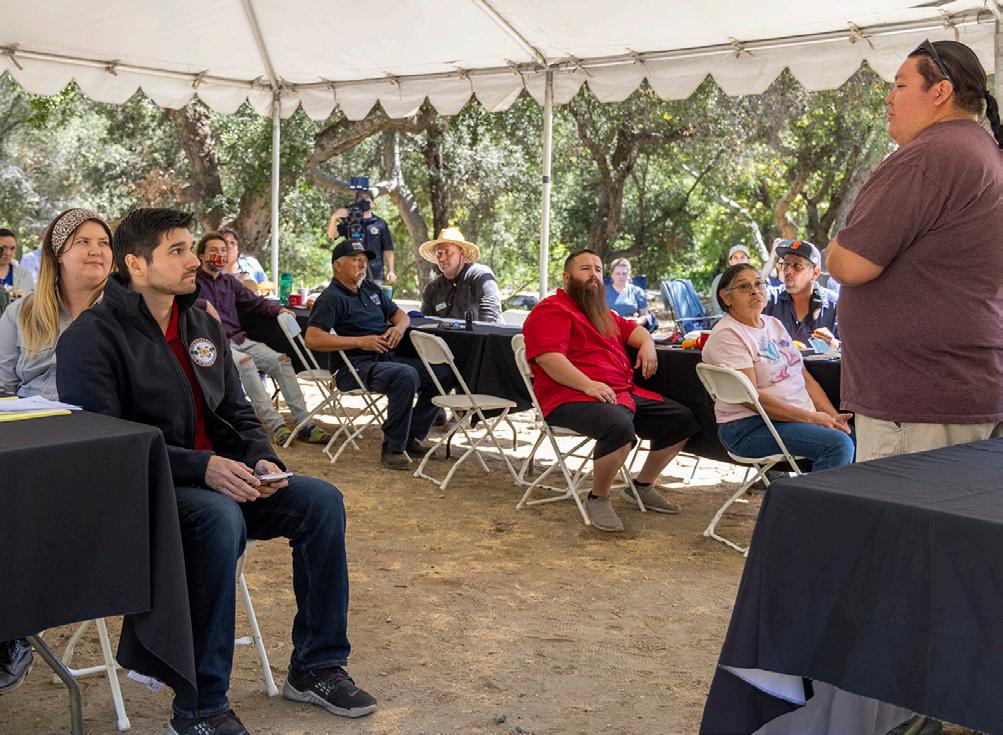
"I have made connections through Climate Science Alliance that never would have happened without this organization."
- ANONYMOUS SURVEY RESPONDENT, 2021Alliance team member leads a discussion at a 2021 Tribal Working Group meeting
Training and capacity building are critical to supporting integration, replication, and transferability of the Alliance Model. Between 2015 and 2020, the Climate Science Alliance team supported or led 94 hands-on workshops for professionals resulting in approximately 3,700 individuals trained. Trainings, events, and convenings provide hands-on skill development and connection to a peer learning network of practitioners working in adjacent sectors and locations. These workshops also have the added benefit of building social capital through a “train the trainers” concept where peers exchange knowledge and showcase their expertise, skills, and experiences. This training approach advances an equal valuation of ways of knowing where academic, Tribal, and local knowledge garner the same trust and respect.
Survey participants indicated using information generated by the Climate Science Alliance for integration, replication, and transferability to their work and/or community. Two-thirds of survey respondents indicated that they use data and information generated by the Climate Science Alliance to support project planning and evaluation with several responses indicating direct application to landscape-level planning. For example, “I use the resources shared by [the Climate Science Alliance] in my courses and also in dialogues with FEMA and other agencies and Tribes who are doing similar work” and, “The assessments of large-scale habitat and connectivity opportunities and threats help me to prioritize issues and potential relevance to our non-profit's and general San Diego regional conservation work.”
Survey participants also noted that they have leveraged Climate Science Alliance staff, Working Groups, and events (e.g., summits and training) as a source of “trustworthy and easily accessible information.” In addition, respondents also indicated using Climate Science Alliance-generated information to support internal and external education and outreach in their organizations and agencies and leveraging the Climate Science Alliance network for “collaborating with partners to build
off a common foundation of information.” For example, several respondents noted that their involvement in the network informed how they approach their work and intentionally shifted their focus to more meaningful engagement to drive project development, planning, and problem solving especially as it related to building partnerships with local Indigenous communities.

"I use information generated and disseminated by the Climate Science Alliance to collaborate with partners to build off [of a] common foundation of information."
- ANONYMOUS SURVEY RESPONDENT, 2021
The Climate Science Alliance has dedicated considerable time and resources on innovative community engagement opportunities to educate the public and our partners on climate change science and solutions and to elevate the planning and projects that partners are implementing. Innovative community outreach efforts have placed a specific emphasis on youth and family education with directed efforts at mainstreaming understanding of regional climate impacts and solutions.
From 2015 to 2019 the Climate Science Alliance led and supported 215 community events reaching over 350,000 members of the public. Specifically, the Climate Science Alliance team worked closely with formal and informal educators to create the Climate Kids program focused on regionally specific climate science and solutions. While focused on K–12 education, programming is also relevant for community outreach and informal education settings because it integrates ecological and culturally relevant programming.

In 2020, the Climate Science Alliance rolled back its participation in public events due to the COVID-19 pandemic, and pivoted to elevating and creating online resources for educators and community members, while striving for ways to lessen the digital divide. As a result, Climate Kids Connects was launched with hundreds of hours of digital resources available on demand. To complement the Climate Kids Traveling Trunks available for check out around the region, the Climate Kids Explorer Backpacks and Book Club resources provide opportunities for youth and educators on the go and for those without internet access. In addition, the Climate Science Alliance team mobilized to collect, donate, and deliver over 6,000 personal protective equipment items including face masks, shields, hand sanitizer, gloves, and other cleaning supplies to our partners across southern California and Northern Mexico with a specific focus on getting resources to youth and families.
To date, Climate Kids resources, tools, and programming has reached more than 250,000+ youth bi-nationally
across the United States and Mexico, in Native Nations across Southern California, Arizona, and Northwestern Mexico; and in seven states/territories including California, Nevada, Washington, Missouri, Montana, Puerto Rico, and the Virgin Islands.
Survey respondents articulated their use of Climate Kids resources directly in their work in classrooms, museum exhibits, and educational presentations for the public. One survey respondent commented that “We use [Climate Kids] information in planning our annual environmental leadership summits and community outreach and education” and another source shared that “When we do presentations for youth or young adults, it is nice to look at the ‘Climate Kids’ resource to be able to brainstorm ideas and even adopt some so that we can share them with our communities” indicating the wide application of what survey participants see as “Trustworthy and easily accessible information.”
"Partnering with the Alliance has been a profound multiplier of our intentions to be ever more inclusive and inviting members of our local region."
- ANONYMOUS SURVEY RESPONDENT, 2021Alliance team members lead a Climate Kids demonstration about pollinators at the 2022 Cahuilla Earth Day event
As the Climate Science Alliance’s partner network has grown in number and diversity of members, the Alliance Model too has evolved. Built on the strong foundation of the integration of the three components of Building Resilience, Building Capacity, and Building Community, the Alliance Model can be replicated and transferred across geographies, ecologies, topics, sectors, and communities. With each project that the network undertakes, the Alliance Model has been scaled up and replicated, accelerating advancement towards community-led transformational adaptation.
Research
Resilient Restoration Descendents
United for Nature, Adaptation, and Sustainability (DUNAS)
Resilient Coastlines Project
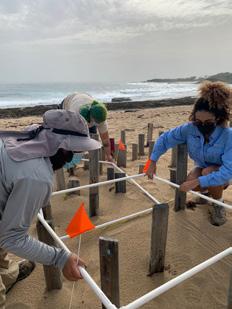
Natural landscapes in Southern California
Coastal dune systems in Hacienda la Esperanza Reserve, Puerto Rico
Coastlines in San Diego County, California
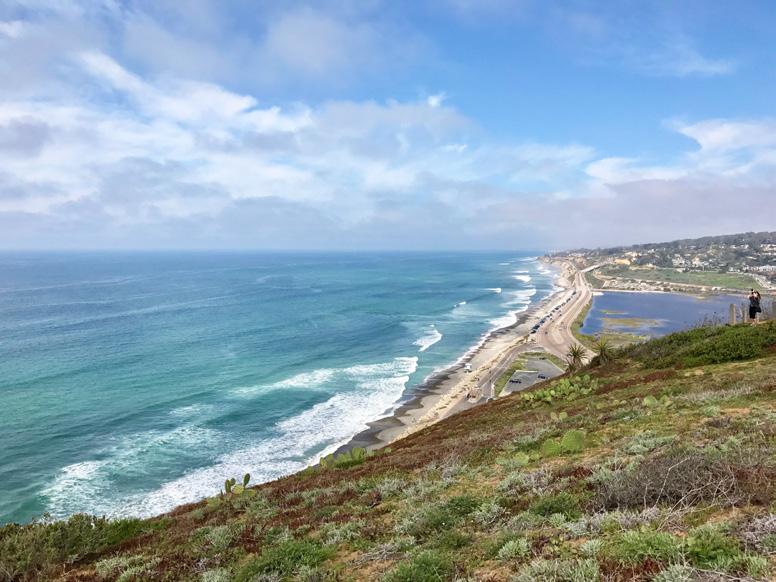
Resilient Roots
Agricultural landscapes in Southern California
Natural resource conservation
Cultural heritage
Biodiversity conservation
Cultural heritage
Sea-level rise
Coastal planning
Agroecology
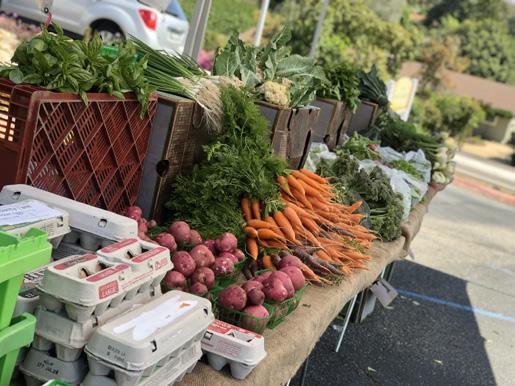
Carbon sink farming practices
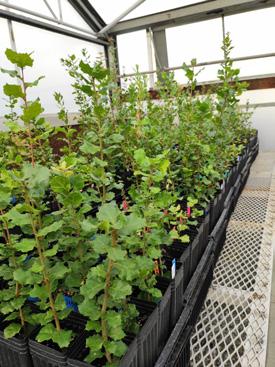
Tribal government
Emergency services
Research
Non-governmental organizations
Research
Local government
Research
State government
Private businesses
Tribal community leaders
Multigenerational relationships (youth and elders)
Local community members
Citizen scientists
Youth
Coastal communities
Planners
Agricultural producers
Tribal practitioners
Local community members
Figure 12. Example of projects that illustrate replication and transferability of the Alliance’s model. Please note this list represents only a subset of the Climate Science Alliance’s broader portfolio—more information can be found in the “Dig Deeper” section of this report, and online at www.climatesciencealliance.org.
"I see your organization as the catalyst to connect others to create meaningful change."
- ANONYMOUS SURVEY RESPONDENT, 2021
In particular, our model makes space for partners to work collaboratively through different channels to address system wide changes, focus on long-term objectives for future outcomes, and specifically address social injustice and power imbalances, an integral part of transformational adaptation (Fedele et al., 2019, 2020; Feola, 2015; O’Brien, 2012). Figure 12 highlights a subsection of Climate Science Alliance projects that are replicating and transferring the Alliance Model. See “Dig Deeper” at the end of this report for a more detailed description of the Alliance Model in action across a diversity of projects.
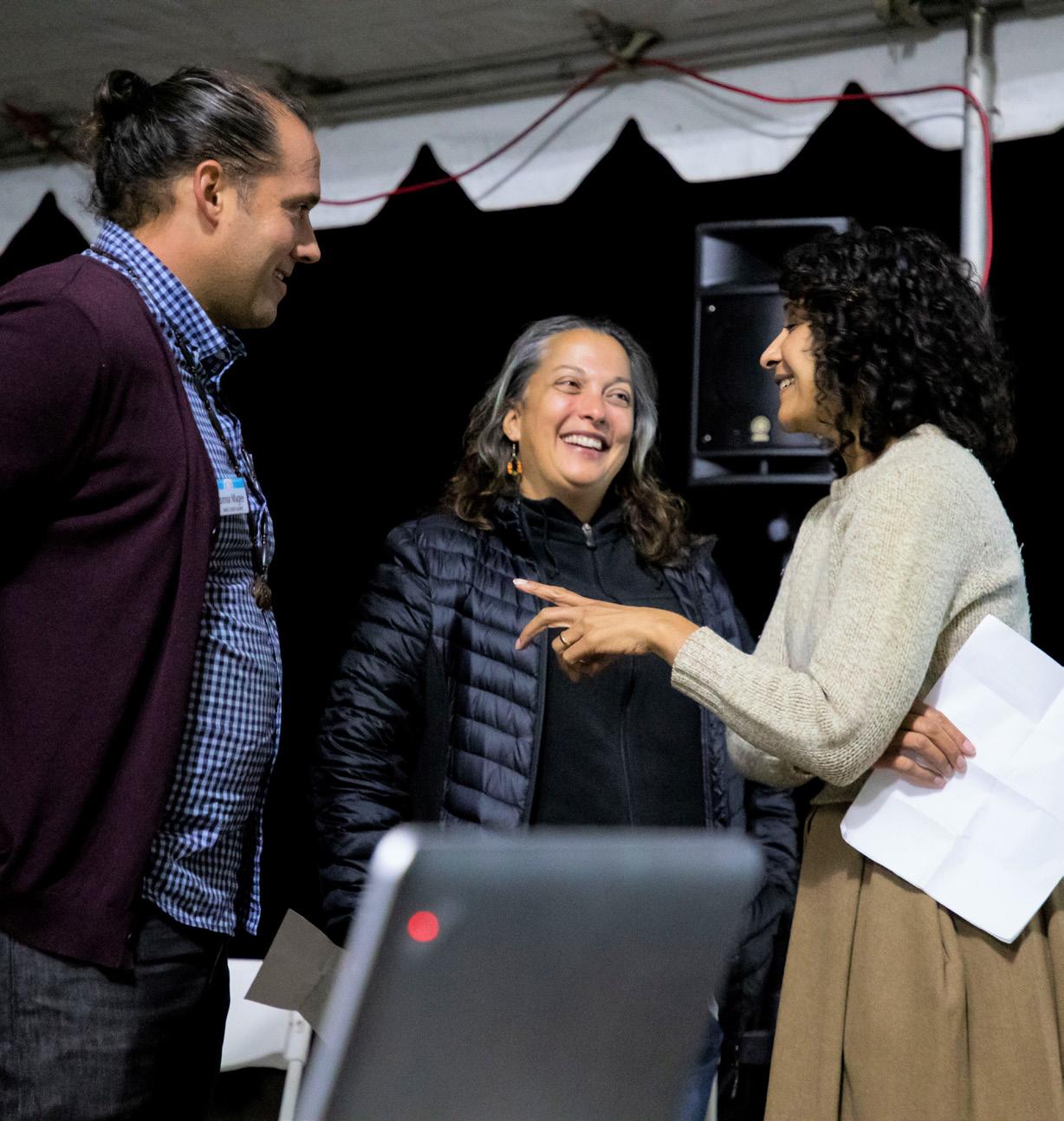
The Alliance Model provides a pathway for community partners to initiate steps toward advancing adaptation planning and projects, build confidence and trust, and lays the foundation towards large-scale transformational actions. Sustained and meaningful engagement supports the building, maintaining, and nurturing of relationships, expertise, and integrated values that make it possible to keep moving forward and accelerate adaptation. With that in mind, this model can be replicated, transferred, adapted, and scaled up to truly advance transformational adaptation actions that are equitable, inclusive, actionable, and sustained by the people it is designed for.
The Alliance Model components create a foundation upon which to replicate projects across regions, disciplines, sectors, and communities. That said, there are also key “behind the scenes” aspects that take place in order for all of the aforementioned efforts to be successful: (1) available social capital and (2) a nurtured core team.
To create the Climate Science Alliance, the organization’s Founder relied on the social capital built over many years of working in the climate adaptation space, and the credentials and relationships that helped get a foot in the door to pitch the idea of what the Alliance could be. Leveraging that capital to obtain buy-in from what would become the foundational Climate Science Alliance network of partners was a key aspect of launching the organization. Not something that can be accomplished part-time or on the fly, dedicated time and funding is required to meet with partners and explain the Climate Science Alliance vision, receive input and advice, and nurture and maintain those relationships with trusted advisors, colleagues, and funders throughout the organization’s nascent stages.


















































Since its inception, the Climate Science Alliance has relied on a diverse team of full- and part-time staff, interns, and fellows to sustain, contribute to, and grow out the Alliance Model (Figure 13). As the organization has grown from year to year, so has its staffing capacity, and thus its ability to achieve widespread application of the Alliance Model components—one cannot be achieved without the other.























A challenging, but critical part of nurturing a successful core team is having dedicated time for outreach for each team member that is not tied to any specific project deliverable or product. This free time is what allows staff members to nurture and invest in the relationships that make up our network and community partners, the place where new ideas and projects are created, visioned, and connected to others, the place where trust is created. Additionally, this time also allows for unstructured, creative thinking for staff to develop novel approaches, ideas, or follow through on things they are passionate about.
To create this diverse core team requires an organizational commitment to sustain competitive and liveable wages, allow for flexibility to meet individual and family needs, and trust in individuals to highlight their strengths. Accommodating individual needs, family and personal obligations, personal interests, and creating a strong sense of community among staff is key. A space where differing ideas and beliefs are welcomed, heard, and respected helps create a mutually beneficial work environment that spills over into our external partnerships. The individuals who have collectively made up the Climate Science Alliance team over the years have ranged from short-term roles that create a space hyperunique to see their vision and ideas come to life—such as art fellows, interns, elder fellows— to permanent staff positions. Staff positions allow for both early-career individuals who are looking to gain skills and mentorship or a place to begin their careers as a stepping stone to larger goals. The Alliance is also a space where individuals who are looking for long-term career opportunities within the Climate Science Alliance can create space for their dream job that doesn't exist anywhere else.
 Climate Science Alliance team members and partners gather for dinner at a Carbon Sink Farming Convergence event. (Credit: Condor Visual Media)
Climate Science Alliance team members and partners gather for dinner at a Carbon Sink Farming Convergence event. (Credit: Condor Visual Media)
Through its core concepts, the Alliance Model has been designed to address key gaps and issues that can help us move forward with actions and partnerships that are critical to advancing transformational adaptation. Our efforts to Build Resilience through science-focused partnerships meet our partners' needs for collaborative co-production and help develop actionable and relevant science (Singh et al., 2020) and external expertise (Dannevig et al., 2012). As we Build Capacity to advance climate-informed conservation through training, tools, and resources, we are supporting partners in the application of climate science and solutions (Stein et al., 2014). And finally, as the Alliance Model Builds Community through innovative community engagement, we are garnering the community buy-in, trust, and leadership that is essential to facilitate the "transformation" of the community and its response to climate change (Boon et al., 2021). The integration of these three components is foundational to pursuing holistic, interdisciplinary, multisector efforts that advance transformational climate adaptation at multiple scales.
Respect, reciprocity, and relationships are intertwined into everything the Climate Science Alliance pursues. This requires a commitment to deep collaborative learning and addressing the foundational vulnerabilities that many communities experience. As an organization, the team understands that none of this work matters if the power to act is not in the hands of the community. All of the Climate Science Alliance’s projects and activities stem from the priorities identified by working groups, providing a platform for partners to engage in meaningful research to demonstrate reciprocity, build on ideas created by the members, initiate pilot projects, and work collaboratively with researchers to integrate different knowledge(s) and skill sets. Programming changes regularly and the team needs to be nimble to pivot towards the needs of community partners.
As we look to the future, our organization will continue to serve as a bridge that upholds the equal valuation of knowledge and respectful engagement, providing a space where partners can participate in a reciprocal process—where sharing space means sharing power. By centering trust, respect, and reciprocity in our work, the Climate Science Alliance team strives to create a safe and nurturing environment for people to gather, share ideas, build and grow relationships, and ultimately, expand the impact of their individual work through collaboration with the collective network. We commit to adapt and evolve our model to meet the needs of our partners and pursue a path that builds equity and justice. As a team, we are already exploring a non-hierarchical organizational structure and leaning into an approach that decolonizes adaptation planning and projects at multiple scales. Everyday we are reflecting, adjusting, and disrupting, in order to change the paradigm for how climate work is approached and implemented. Adaptability is the only path forward in creating a just and equitable climate informed future for all people and our non-human relatives.
 Climate Science Alliance team members and partners convene at the La Jolla Indian Campground for a Tribal Working Group and Stewardship Pathways joint meeting
Climate Science Alliance team members and partners convene at the La Jolla Indian Campground for a Tribal Working Group and Stewardship Pathways joint meeting

www.climatesciencealliance.org/resilient-restoration
This collaborative project promotes Tribal resilience by developing knowledge and supporting actions that enhance persistence of cultural practices with a focus on preserving the ecosystems and species that are integral to Tribal communities. Project and research components stem from the priorities identified by the Tribal Working Group, which provides leadership and guidance to determine the priorities, vision, goals, and deliverables of this project.
Translating a climate model that incorporates cultural and ecological values. Adaptation for natural resources expanded to integrate health and wellness, culture and community, local, traditional, and academic knowledge. Knowledge holders and academic experts working collaboratively with Climate Science Alliance staff and Tribal community leaders. Multigenerational approach that includes elders and youth with practitioners and researchers, interns, and postdoctoral students.
Project is visioned, led, and implemented by Indigenous community partners. Capacity building extended into economic and workforce development to build capacity to utilize and apply climate science research. Equal valuation for ways of knowing. Tribal only advisory group that brings in cultural leaders and other knowledge holders.
Multigenerational approach that leverages Climate Kids Tribes program, elders Indigenous Climate Fellowship, Tribal leadership and Tribal workgroup of practitioners from 20+ Tribes. Sustained and meaningful engagement over 5+ years. Indigenous staff and leadership overseeing the supporting the project. Making space for others to lead.

www.climatesciencealliance.org/dunas
DUNAS is a community based, climate adaptation project focused on dune restoration for conserving biodiversity and cultural heritage in Puerto Rico. The project was convened to restore coastal dunes in northern Puerto Rico that were severely degraded by Hurricane Maria. DUNAS provides a unique community-based model for how to bridge social and environmental resilience through climate adaptation strategies and solutions by weaving together cultural, ecological, and community values. The project focuses on restoring damaged sand dunes that are critical for protecting coastal habitats and communities against storm surge and rising seas. The dunes also safeguard numerous areas of cultural significance. Local communities, citizen scientists, and youth are assisting and leading all coastal restoration and climate education activities.
Translating climate science across disciplines. Bridged regional climate science, coastal resilience, and cultural heritage through regional sea level rise and extreme storm data with archeology. Archeologist, ecologist, local managers and community leaders, and local elders working collaboratively from two academic institutions and two NGOs.
Invested in training, supporting, and funding local community leaders to act as champions that oversee and develop volunteer programs. Focused on cultural heritage and the communities’ connections to place to explore how climate change will impact people now and in the future. Cultural heritage and archeological sites serve as the gateway to conversations on climate change.
Climate Kids Puerto Rico pilot project focused on dunes conservation and archeology to make it relevant and connected to the local community. Community discussion focusing on dune restoration as a strategy to buy time while the community makes decisions for how it will respond or relocate in the future. The local NGO has on-going projects in the community that made it easy to add a coastal component to their work and they leveraged a volunteer turtle nesting project to monitor and collect data on the dune restoration.

www.climatesciencealliance.org/archive/resilient-coastlines-project
The Resilient Coastlines Project of Greater San Diego represents a regional and multi-faceted approach to building coastal resilience among multiple jurisdictions. The project is designed to connect multiple sea-level rise planning initiatives undertaken by different local jurisdictions, fill existing knowledge gaps that were barriers to resilience planning and implementation, and engage scientific experts and community members in communicating local flooding and erosion risks, and explore feasible nature-based adaptation strategies for the San Diego region.
Created a sea level rise working group that consisted of seven cities, two regional transportation and port entities, two wildlife management agencies, and four natural resource and climate experts.
Created and facilitated training on integrating sea level rise science into planning, workshops on living shorelines, green infrastructure, and regional sea level rise science briefs for leaders. Also developed and funded economic assessment of sea level rise vulnerability.
Artist fellow developed murals of future sea level rise scenarios for the Tijuana River Estuarine Research Reserve.
Balboa Park Earth Day sea level rise outreach events reached 60,000 members of the public.
Developed Climate Kids ocean programming and “Color your Future” coloring book to engage youth in discussion of coastal resources in San Diego and climate change impacts and solutions.
www.climatesciencealliance.org/resilient-roots
Hearing from farmers is the first—and most important—part of our Resilient Roots programming. Agriculture plays a prominent role in Southern California, holding significant economic, cultural, ecological, and historic value. The project focused on working collaboratively with regional producers and growers to understand the region's agricultural landscape, opportunities for climate-smart practices, and the potential for water resilience in a changing climate.
The vision of the 2020 Climate Change Consortium for Specialty Crops in Southern California focused on identifying climate impacts and strategies for climate resilience specific to Southern California’s specialty crop producers. These efforts have provided a critical opportunity to hear from producers, researchers, and technical assistance advisors to identify the opportunities, recommendations, and actions for advancing the region's climate resilience.
In collaboration with Pauma Band of Luiseño Indians and Solidarity Farm, this project helped demonstrate how carbon sink farming practices can be applied under Southern California conditions to benefit farmers and support climate mitigation and resilience efforts. This demonstration project expanded the Tribe’s carbon farming efforts by implementing and disseminating information about five carbon sink farming practices and analyzed data on soil moisture, drought tolerance, and groundwater.
By demonstrating the synergies between healthy food production systems and climate action outreach focused on youth and community.
Farmer Profiles highlighted regional producers and the important work they do in our communities. These stories illustrate what it means to be a farmer in Southern California, and the challenges and opportunities for advancing climate resilience.
The Climate Kids program created new curriculum modules, hands-on activities, and a cookbook to explore the intersection of regional climate change drivers, food systems, Tribal food sovereignty, and specialty crop agriculture.

Adger, W. N., Dessai, S., Goulden, M., Hulme, M., Lorenzoni, I., Nelson, D. R., Naess, L. O., Wolf, J., & Wreford, A. (2009). Are there social limits to adaptation to climate change? Climatic Change, 93(3–4), 335–354. https://doi.org/10.1007/s10584-008-9520-z
Adger, W. N., Lorenzoni, I., & O’Brien, K. L. (2009). Adapting to Climate Change: Thresholds, Values, Governance. Cambridge University Press. https://books.google.com/books?id=dsD5UdpEOPsC
Bierbaum, R., & Stults, M. (2013). Adaptation to Climate Change: Context Matters. Michigan Journal of Sustainability, 1(20181221). https://doi.org/10.3998/mjs.12333712.0001.004
Boon, E., Goosen, H., van Veldhoven, F., & Swart, R. (2021). Does Transformational Adaptation Require a Transformation of Climate Services? Frontiers in Climate, 3. https://doi.org/10.3389/fclim.2021.615291
Dannevig, H., Rauken, T., & Hovelsrud, G. (2012). Implementing adaptation to climate change at the local level. Local Environment, 17(6–7), 597–611. https://doi.org/10.1080/13549839.2012.678317
Dovers, S. R., & Hezri, A. A. (2010). Institutions and policy processes: The means to the ends of adaptation. WIREs Climate Change, 1(2), 212–231. https://doi.org/10.1002/wcc.29
Fedele, G., Donatti, C. I., Harvey, C. A., Hannah, L., & Hole, D. G. (2019). Transformative adaptation to climate change for sustainable social-ecological systems. Environmental Science & Policy, 101, 116–125. https://doi.org/10.1016/j.envsci.2019.07.001
Fedele, G., Donatti, C. I., Harvey, C. A., Hannah, L., & Hole, D. G. (2020). Limited use of transformative adaptation in response to social-ecological shifts driven by climate change. Ecology and Society, 25(1), art25. https://doi.org/10.5751/ES-11381-250125
Feola, G. (2015). Societal transformation in response to global environmental change: A review of emerging concepts. Ambio, 44(5), 376–390. https://doi.org/10.1007/s13280-014-0582-z
Fudge, M., & Hiruy, K. (2019). Linked Boundary Functions: Examining the Role of ‘Research for Development’ Organizations in Integrating Levels of Resource Governance. Society & Natural Resources, 32(3), 255–274. https://doi.org/10.1080/08941920.2018.1517914
Gray, N. J. (2016). The role of boundary organizations in co-management: Examining the politics of knowledge integration in a marine protected area in Belize. International Journal of the Commons, 10(2), 1013. https://doi.org/10.18352/ijc.643
IPCC. (2021). Summary for Policymakers. In V. Masson-Delmotte, P. Zhai, A. Pirani, S. L. Connors, C. Péan, S. Berger, N. Caud, Y. Chen, L. Goldfarb, M. I. Gomis, M. Huang, K. Leitzell, E. Lonnoy, J. B. R. Matthews, T. K. Maycock, T. Waterfield, O. Yelekçi, R. Yu, & B. Zhou (Eds.), Climate Change 2021: The Physical Science Basis. Contribution of Working Group I to the Sixth Assessment Report of the Intergovernmental Panel on Climate Change (p. 3−32). Cambridge University Press. https://doi.org/10.1017/9781009157896.001
Jennings, M. K., Cayan, D., Kalansky, J., Pairis, A. D., Lawson, D. M., Syphard, A. D., Abeysekera, U., Clemesha, R. E. S., Gershunov, A., Guirguis, K., Randall, J. M., Vanderplank, S. E., & Stein, E. D. (2018). San Diego County ecosystems: Ecological impacts of climate change on a biodiversity hotspot (No. CCCA4-EXT-2018–010; California’s Fourth Climate Change Assessment, p. 178). California Energy Commission.
Kirchhoff, C. J., Carmen Lemos, M., & Dessai, S. (2013). Actionable Knowledge for Environmental Decision Making: Broadening the Usability of Climate Science. Annual Review of Environment and Resources, 38(1), 393–414. https://doi.org/10.1146/annurev-environ-022112-112828
Lonsdale, K., Pringle, P., & Turner, B. (2015). Transformative adaptation: What it is, why it matters and what is needed.
O’Brien, K. (2012). Global environmental change II: From adaptation to deliberate transformation. Progress in Human Geography, 36(5), 667–676. https://doi.org/10.1177/0309132511425767
Reed, M. G., & Abernethy, P. (2018). Facilitating Co-Production of Transdisciplinary Knowledge for Sustainability: Working with Canadian Biosphere Reserve Practitioners. Society & Natural Resources, 31(1), 39–56. https://doi.org/10.1080/08941920.2017.1383545
Shi, L., & Moser, S. (2021). Transformative climate adaptation in the United States: Trends and prospects. Science, 372(6549), eabc8054. https://doi.org/10.1126/science.abc8054
Singh, C., Ford, J., Ley, D., Bazaz, A., & Revi, A. (2020). Assessing the feasibility of adaptation options: Methodological advancements and directions for climate adaptation research and practice. Climatic Change, 162(2), 255–277. https://doi.org/10.1007/s10584020-02762-x
Stein, B. A., Glick, P., Edelson, N., & Staudt, A. (2014). Climate-smart conservation: Putting adaption principles into practice (p. 272) [Report]. USGS Publications Warehouse. http://pubs.er.usgs.gov/publication/70093621
Tsosie, R.L., Grant, A.D., Harrington, J., Wu, K., Thomas, A., Chase, S., Barnett, D., Beaumont Hill, S., Belcourt, A., Brown, B., and Sweetgrass-She Kills, RP. (2022). The Six Rs of Indigenous Research. Journal of American Indian Higher Education. Volume 33, No. 4 - Summer 2022
Twigg, J. (2007). Characteristics of a disaster-resilient community: A guidance note. Department for International Development (DFID). Warner, K., Zommers, Z., Wreford, A., Hurlbert, M., Viner, D., Scantlan, J., Halsey, K., Halsey, K., & Tamang, C. (2019). Characteristics of Transformational Adaptation in Climate-Land-Society Interactions. Sustainability, 11(2). https://doi.org/10.3390/su11020356
The mission of the Climate Science Alliance is to safeguard natural and human communities in the face of a changing climate. We do this through leading activities and creating partnerships which increase awareness of climate change impacts, promote solutions, and facilitate action. www.climatesciencealliance.org



